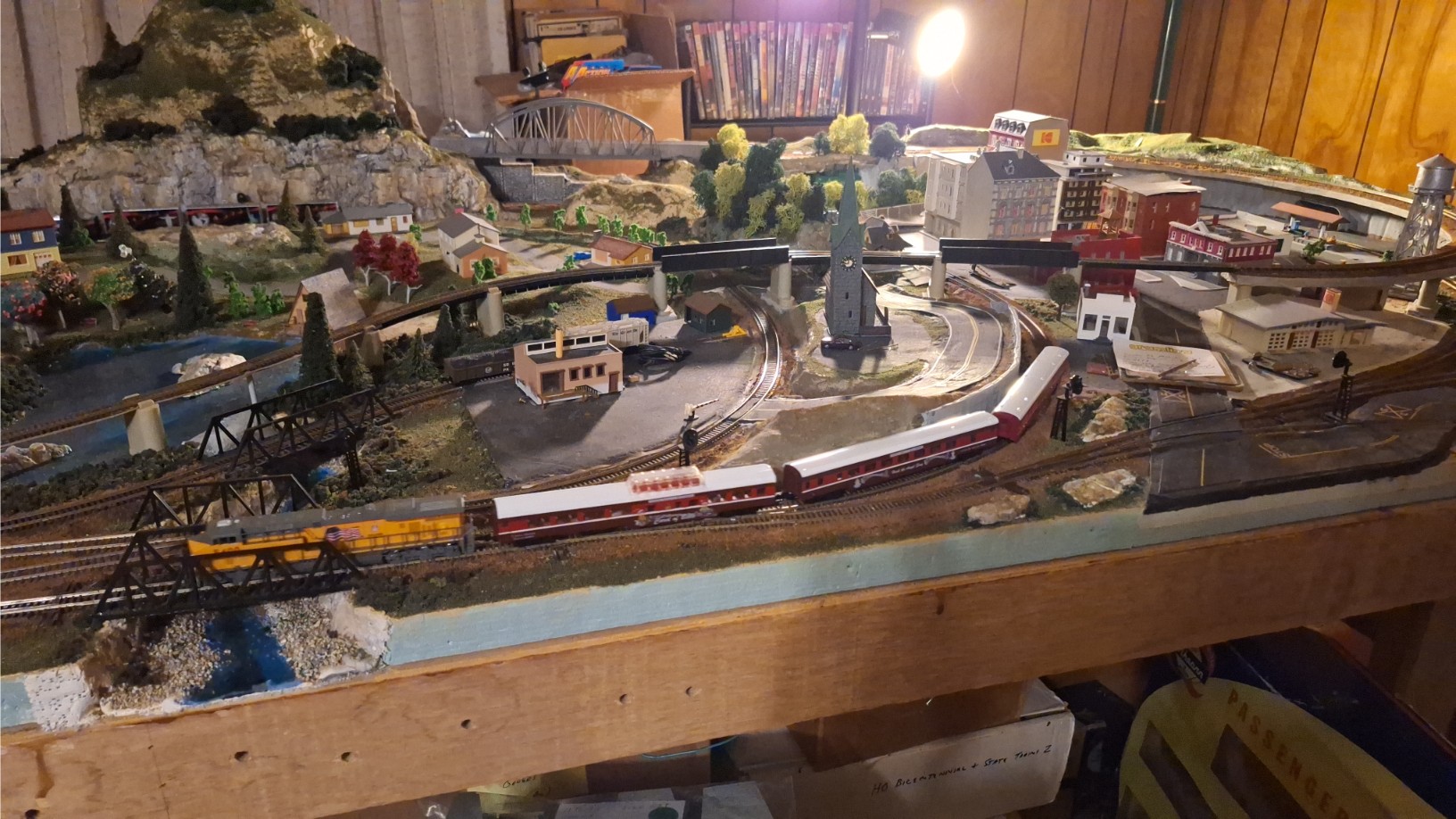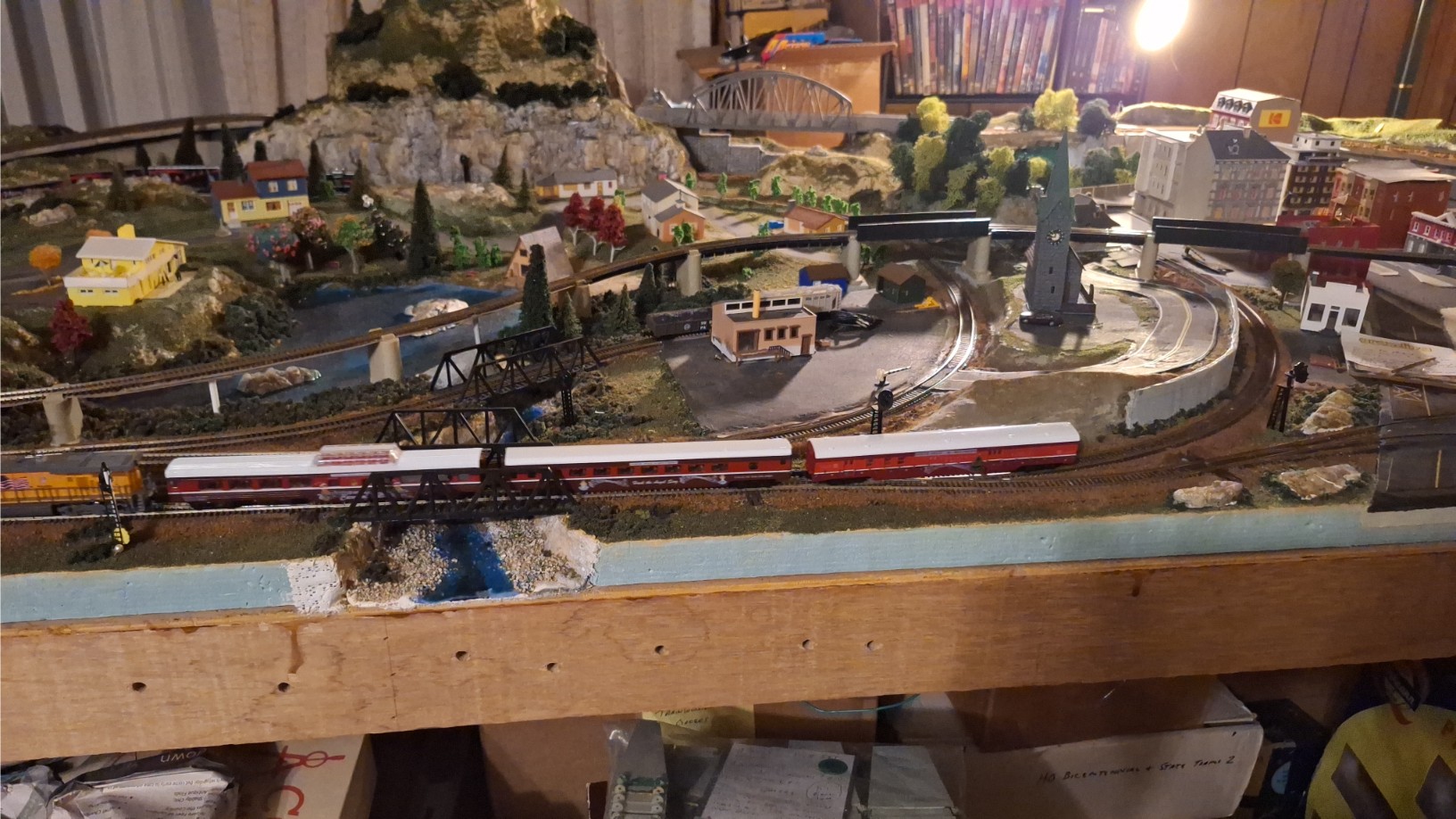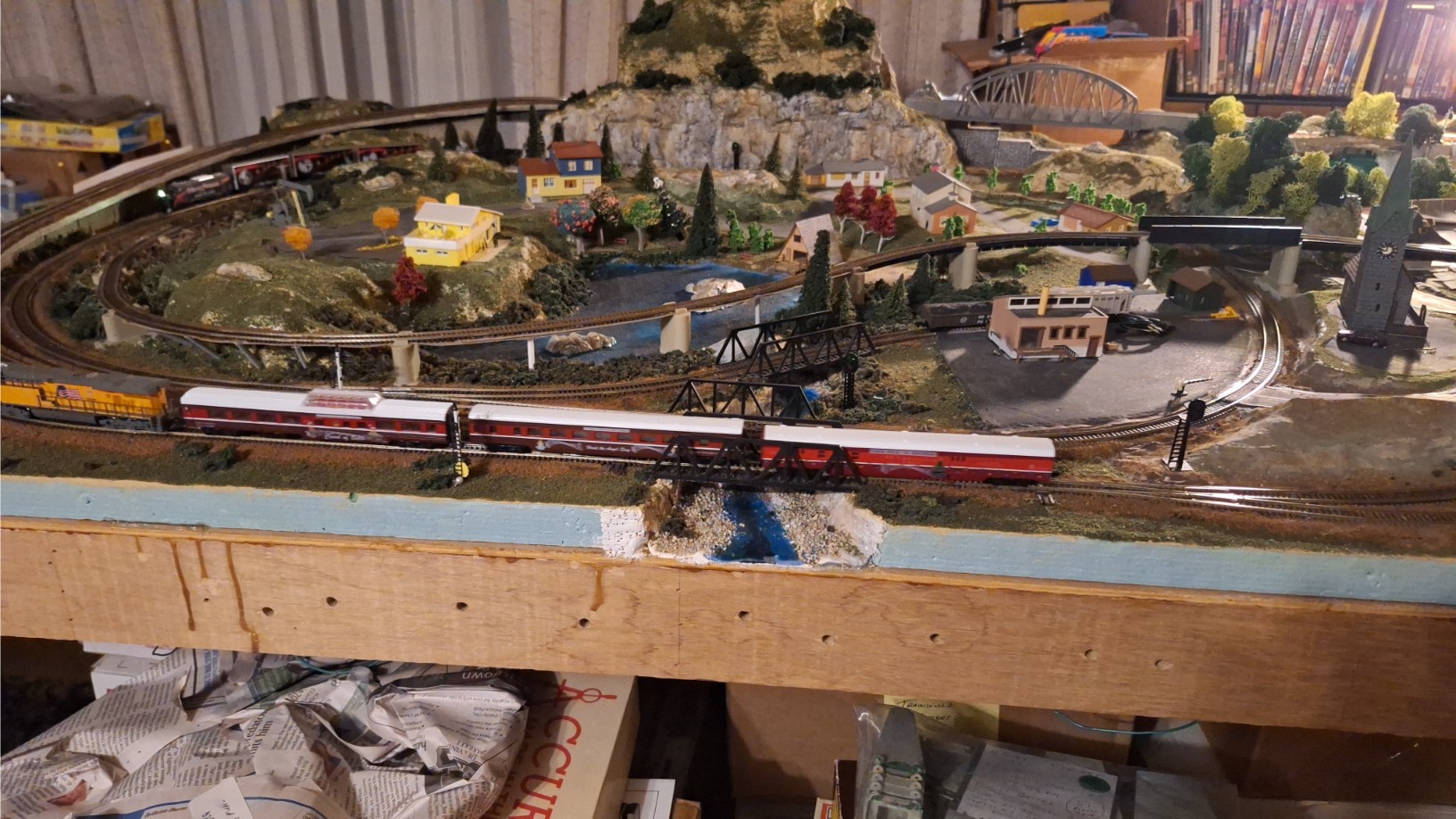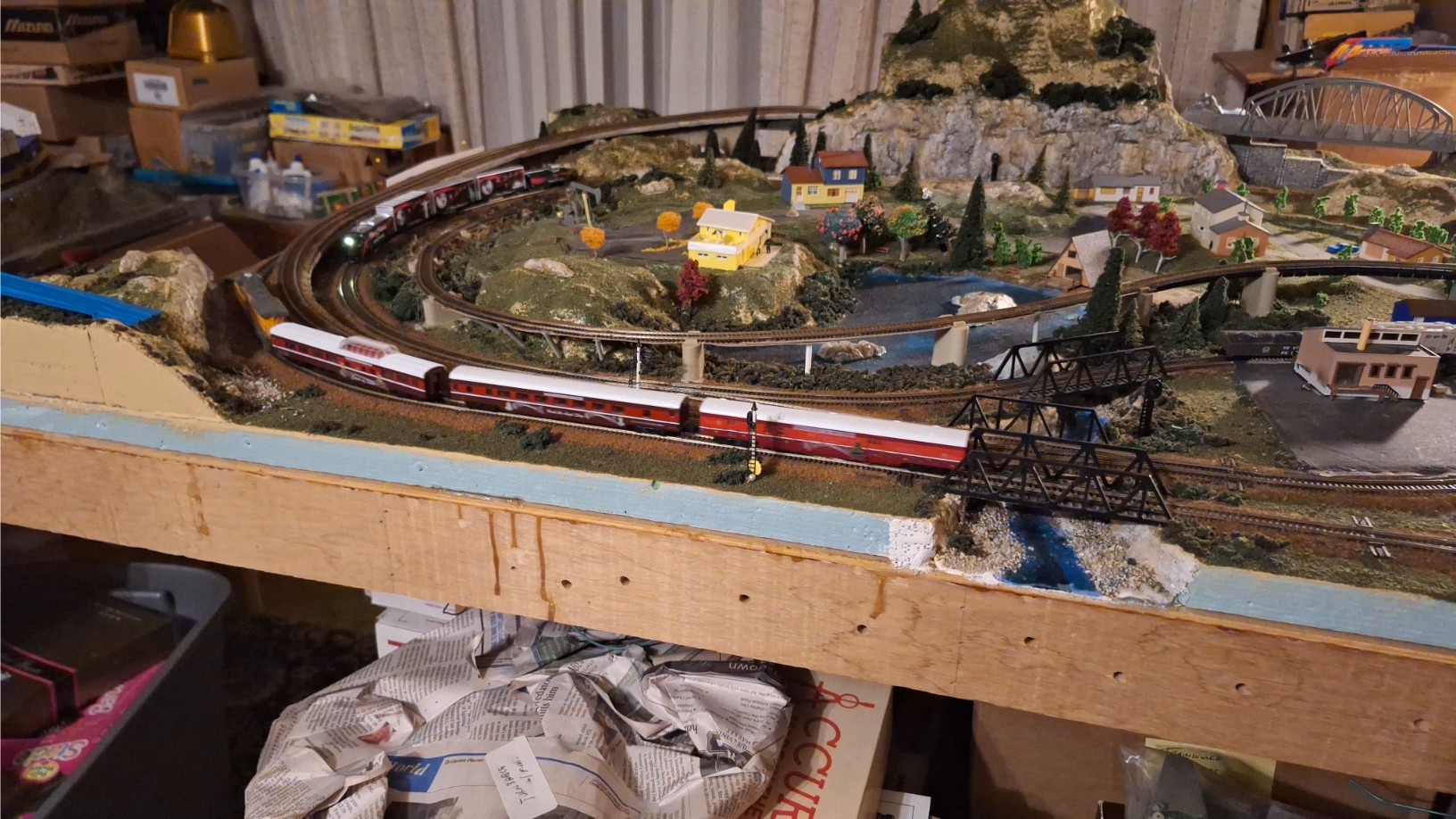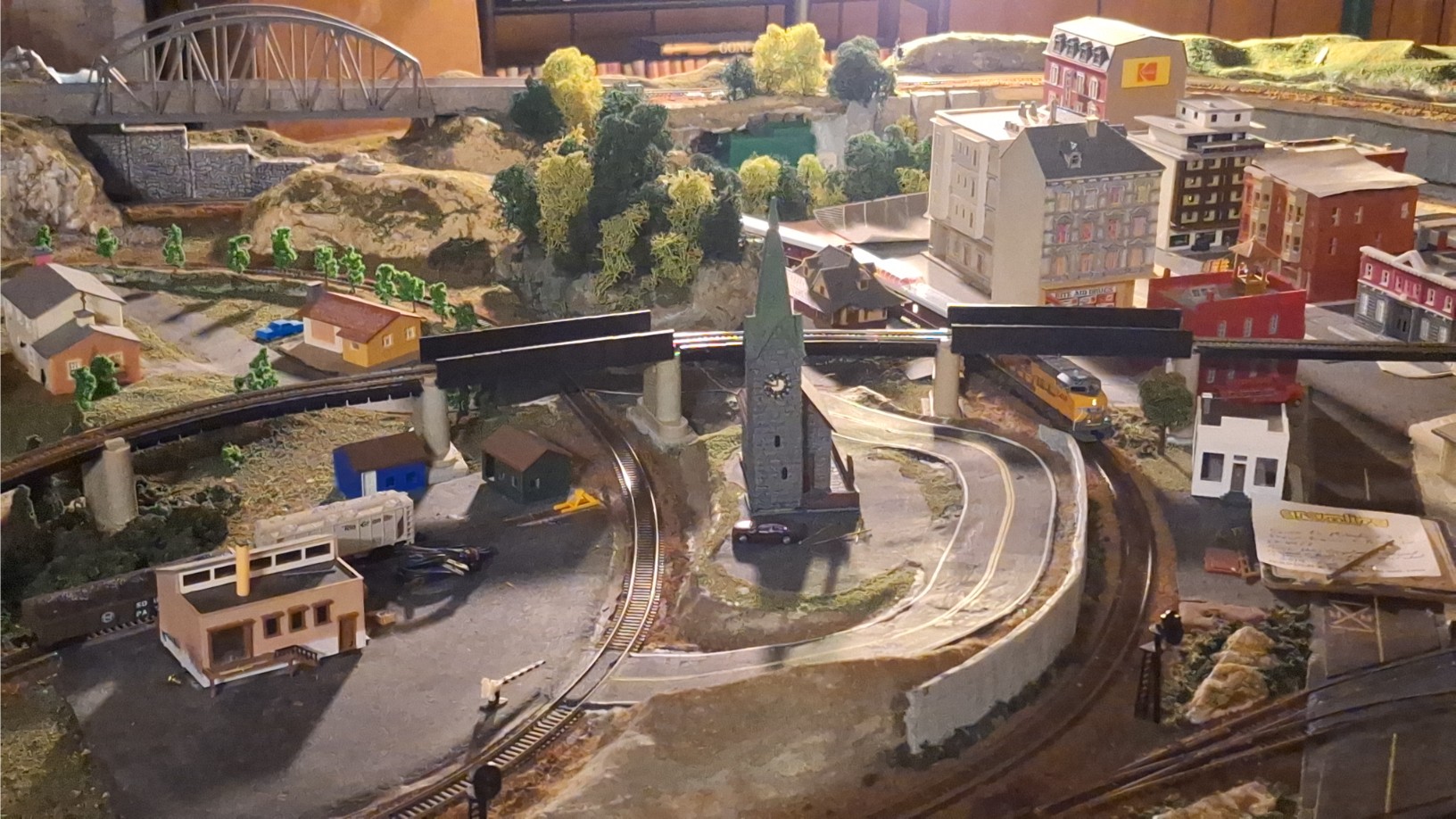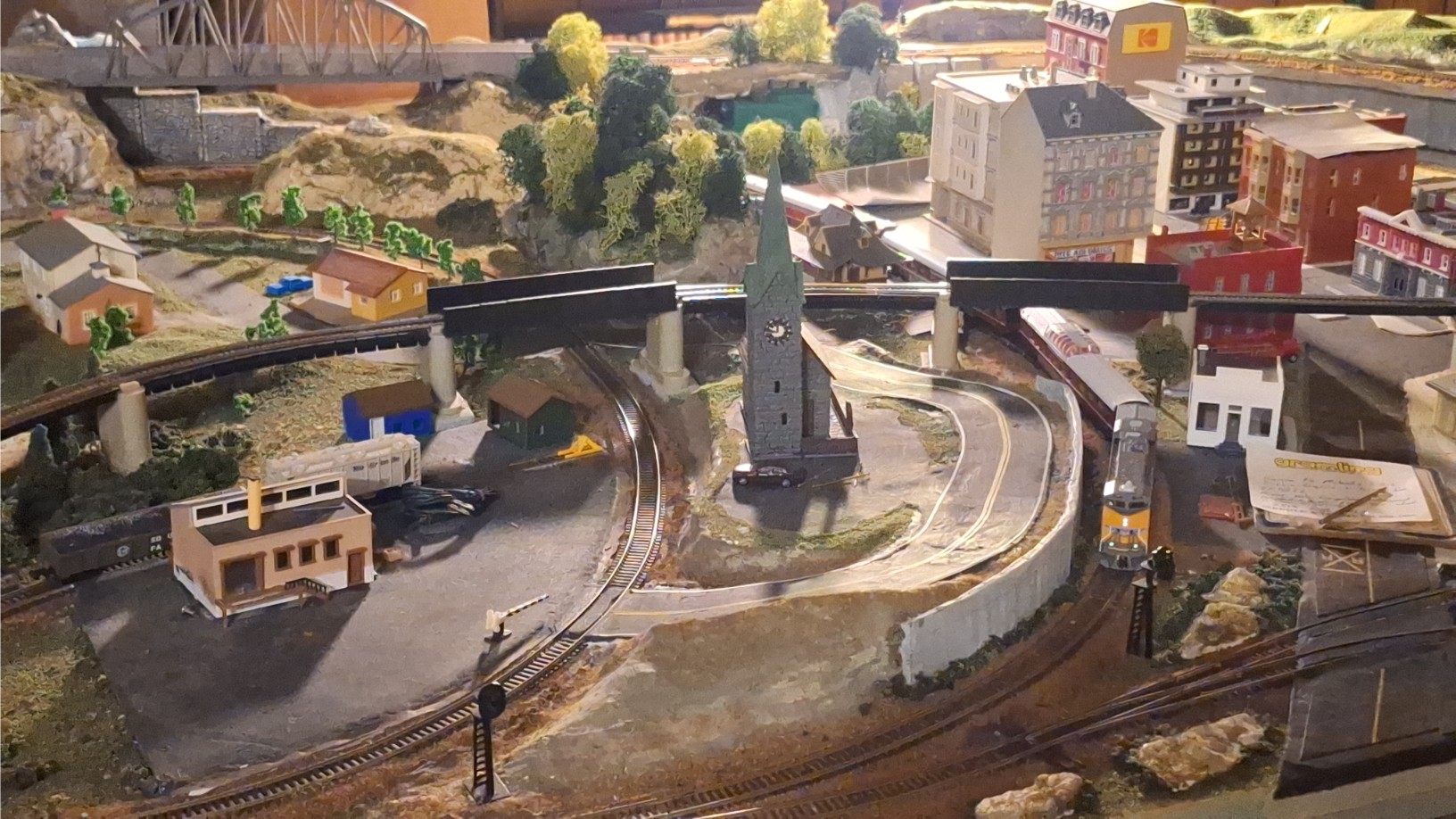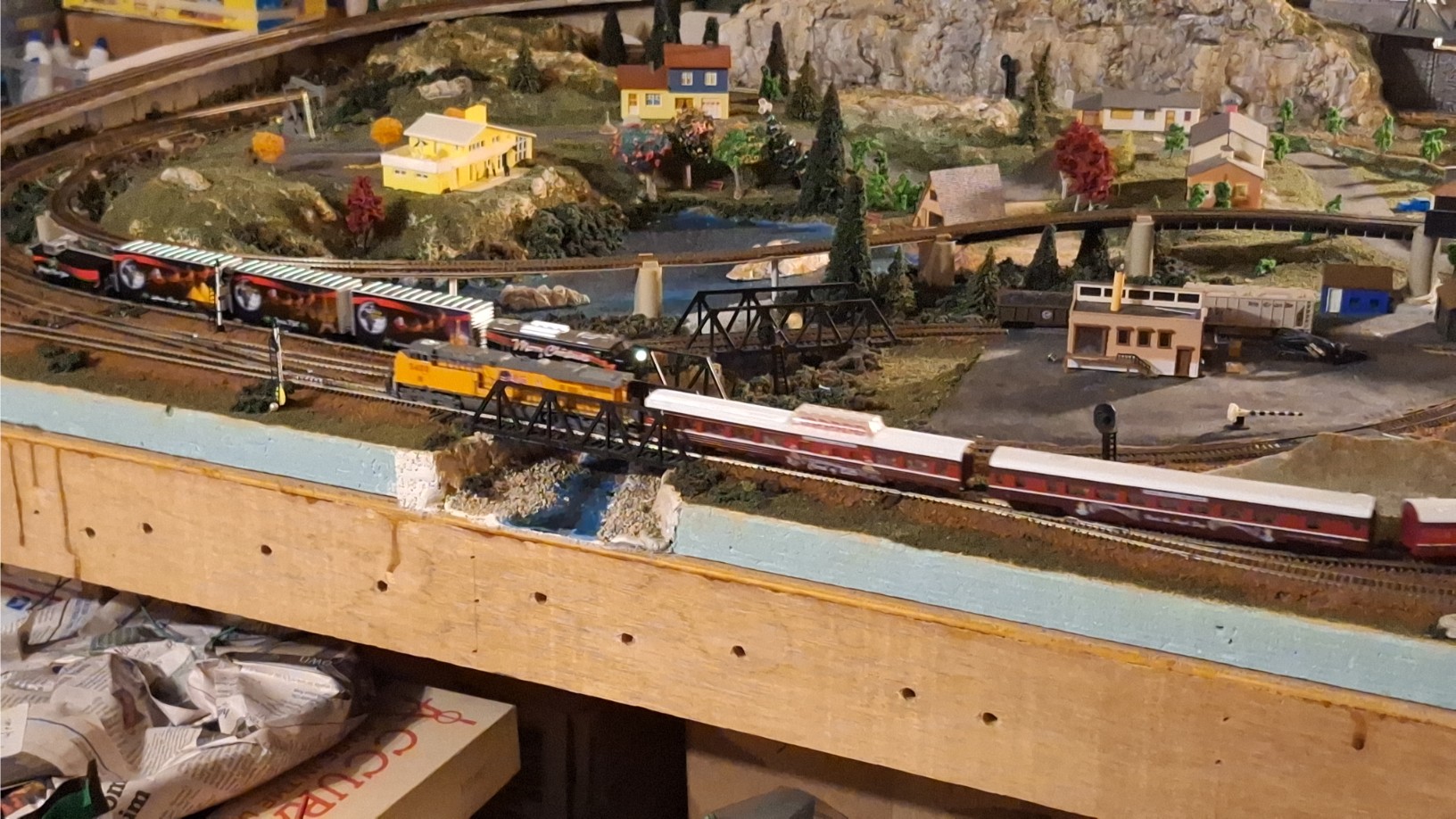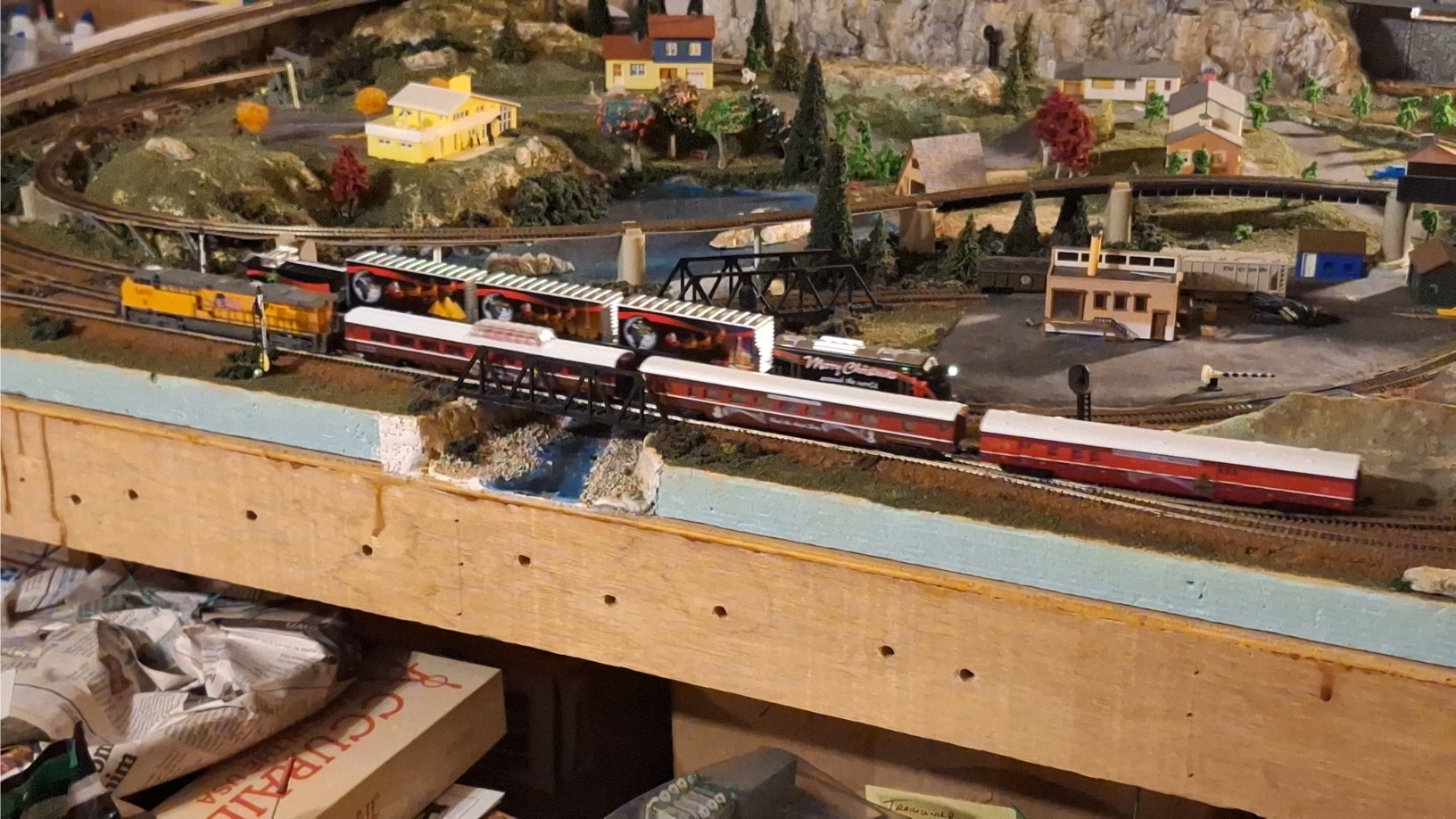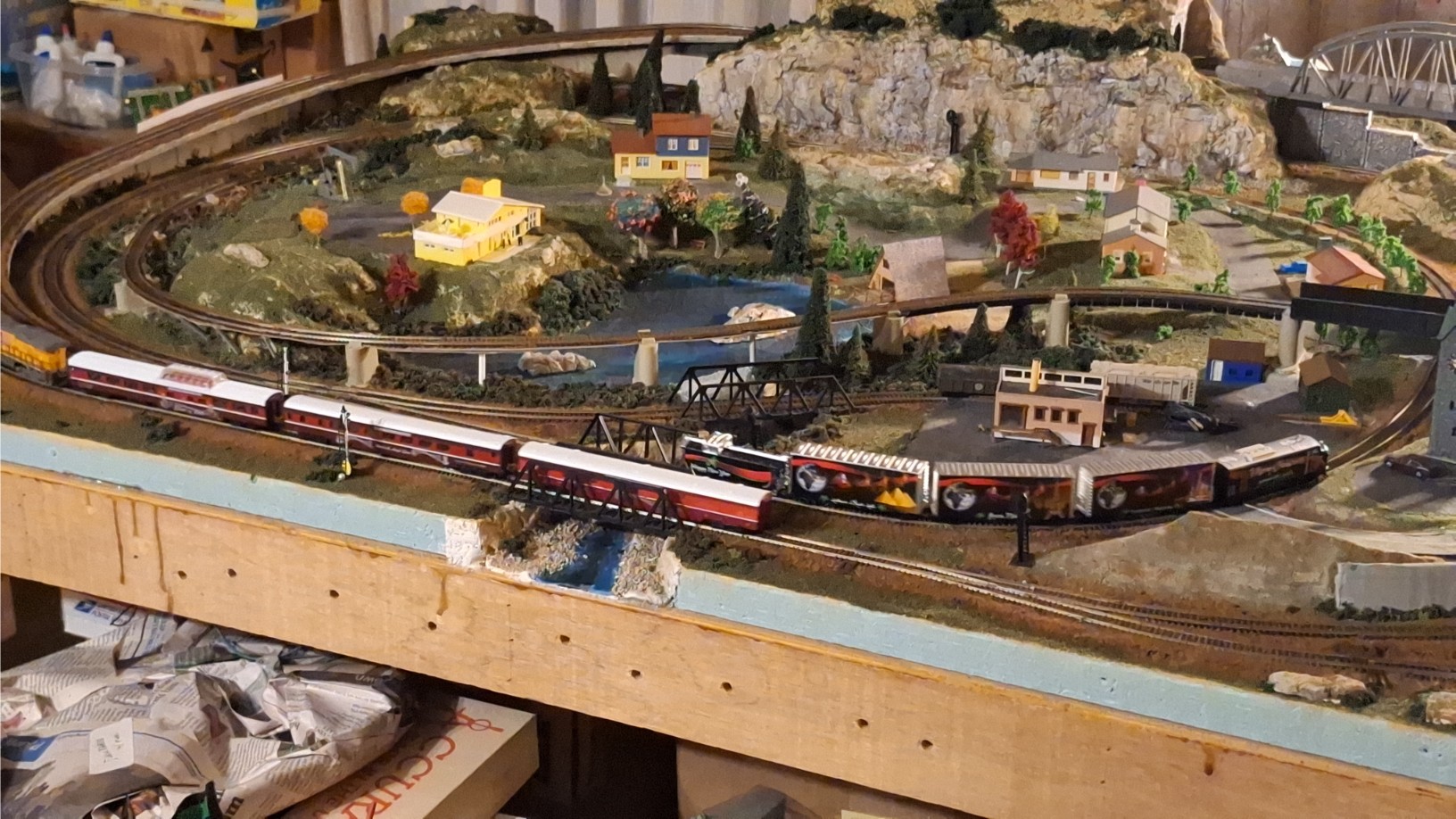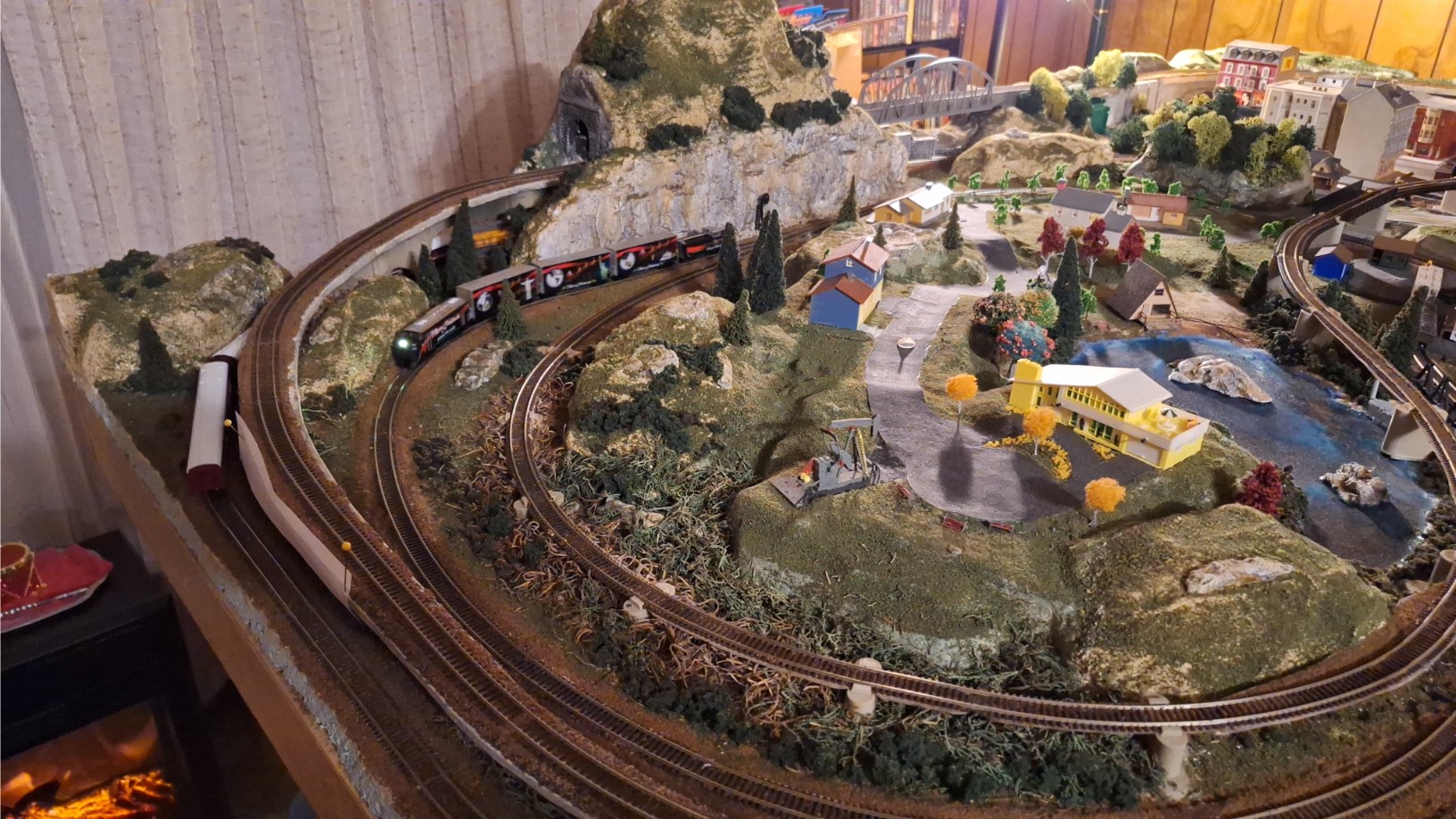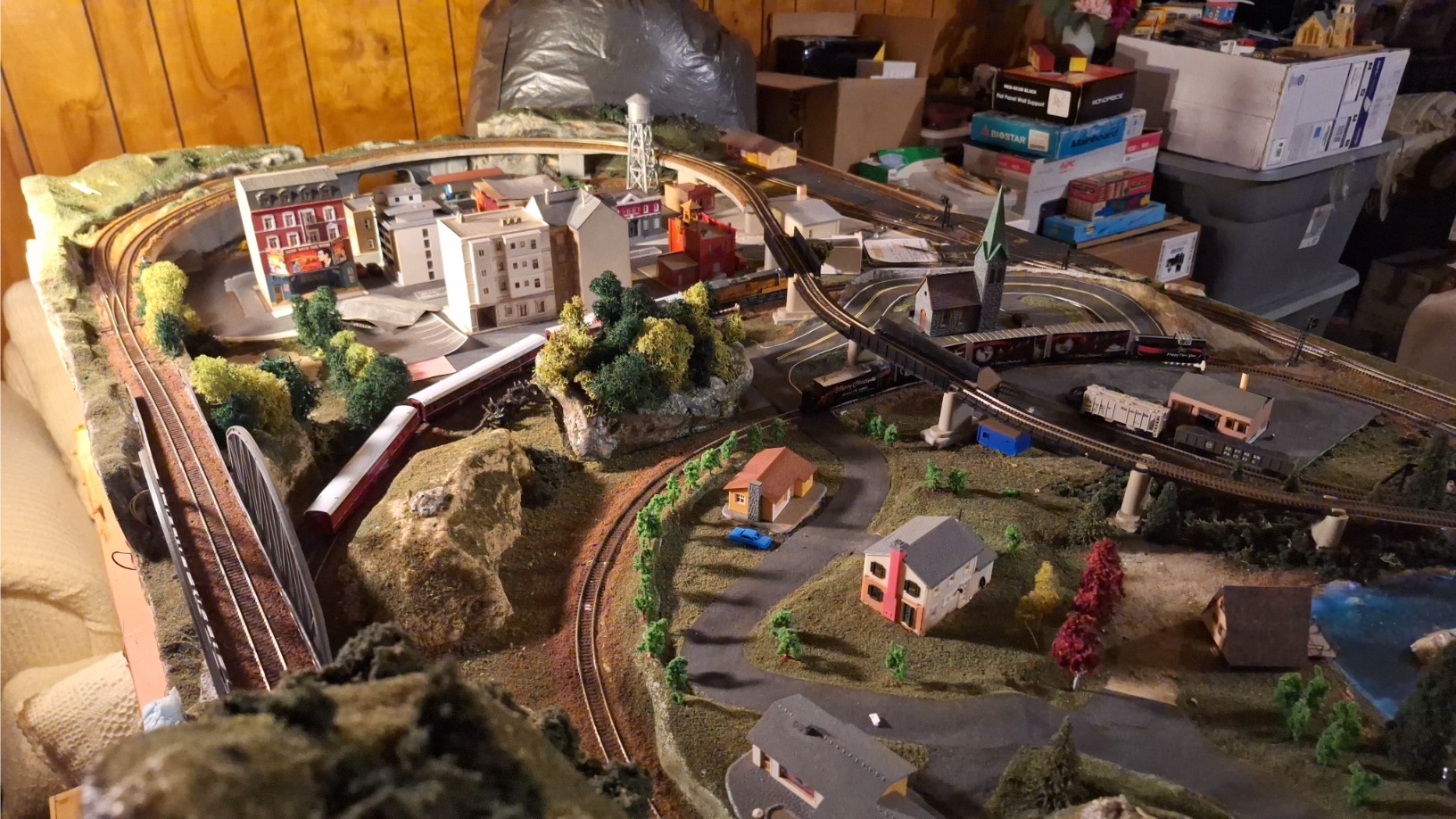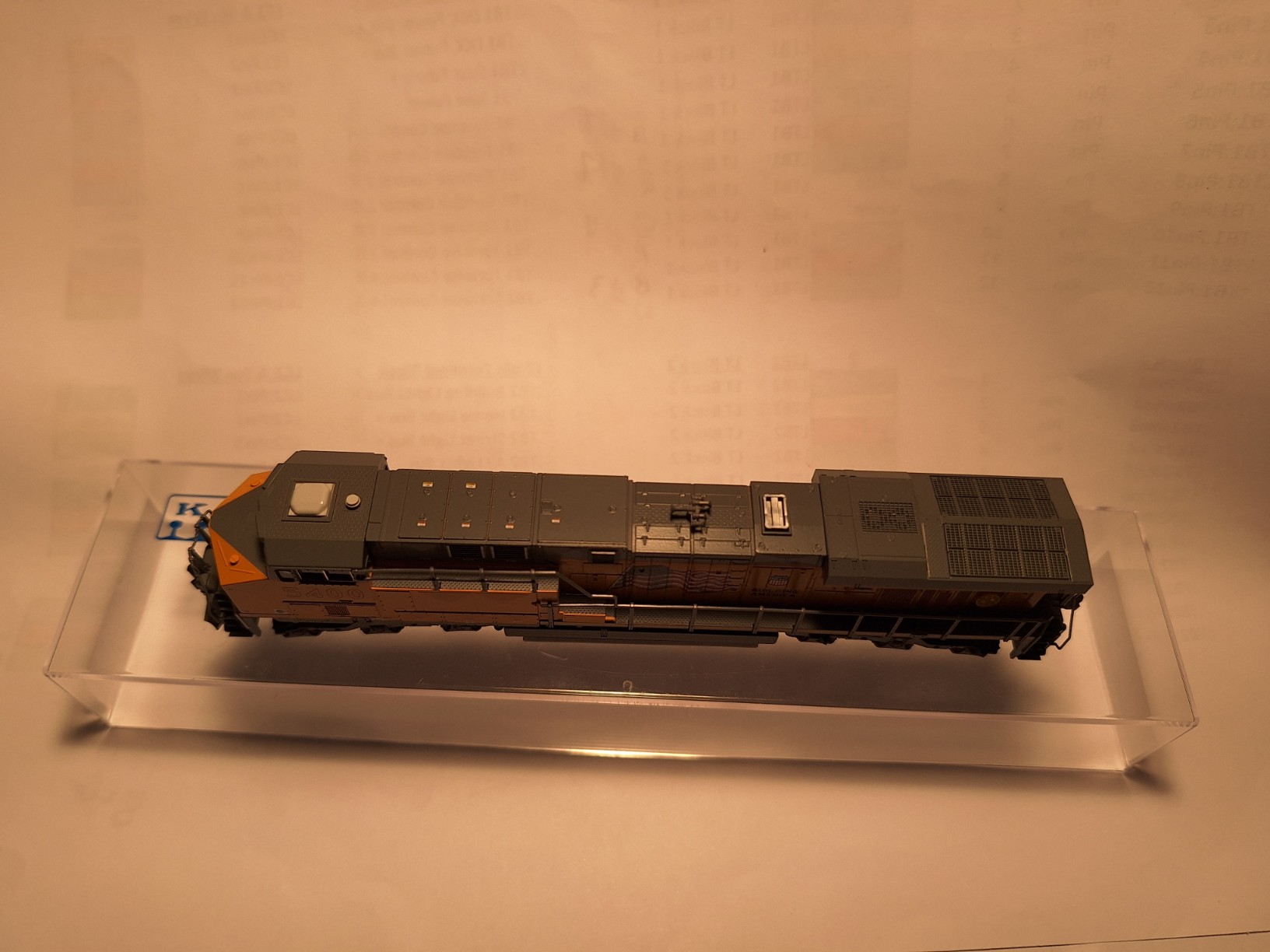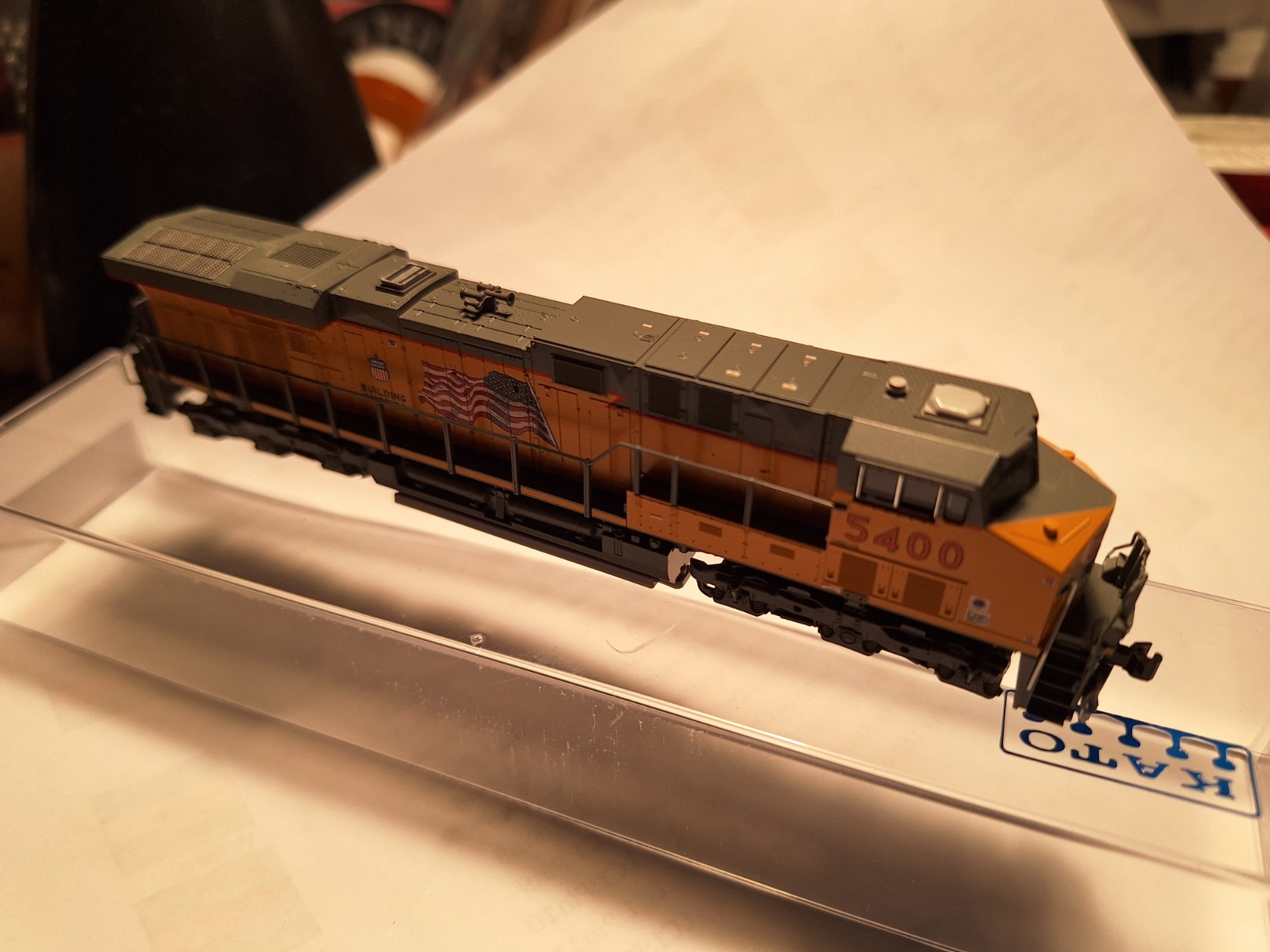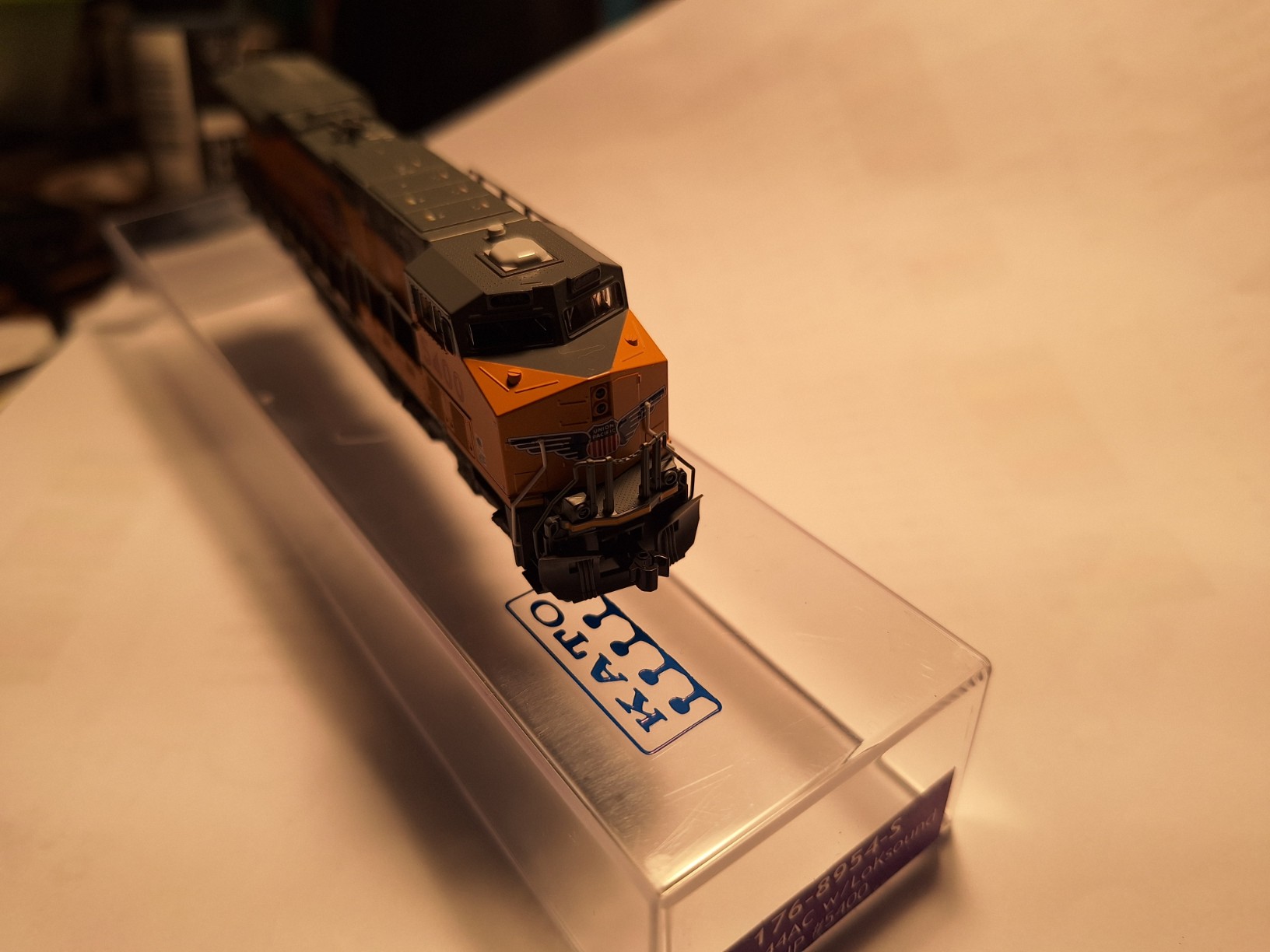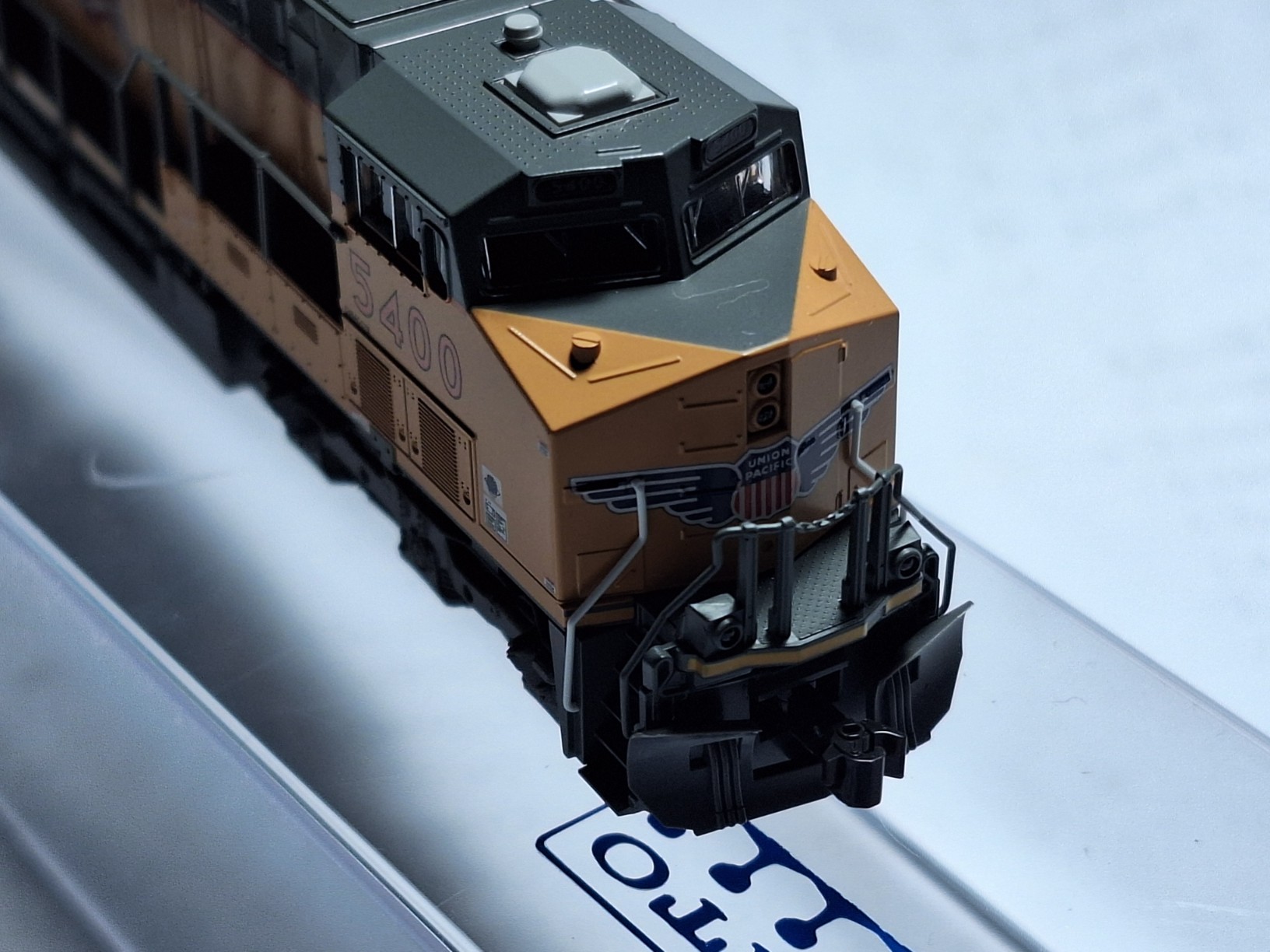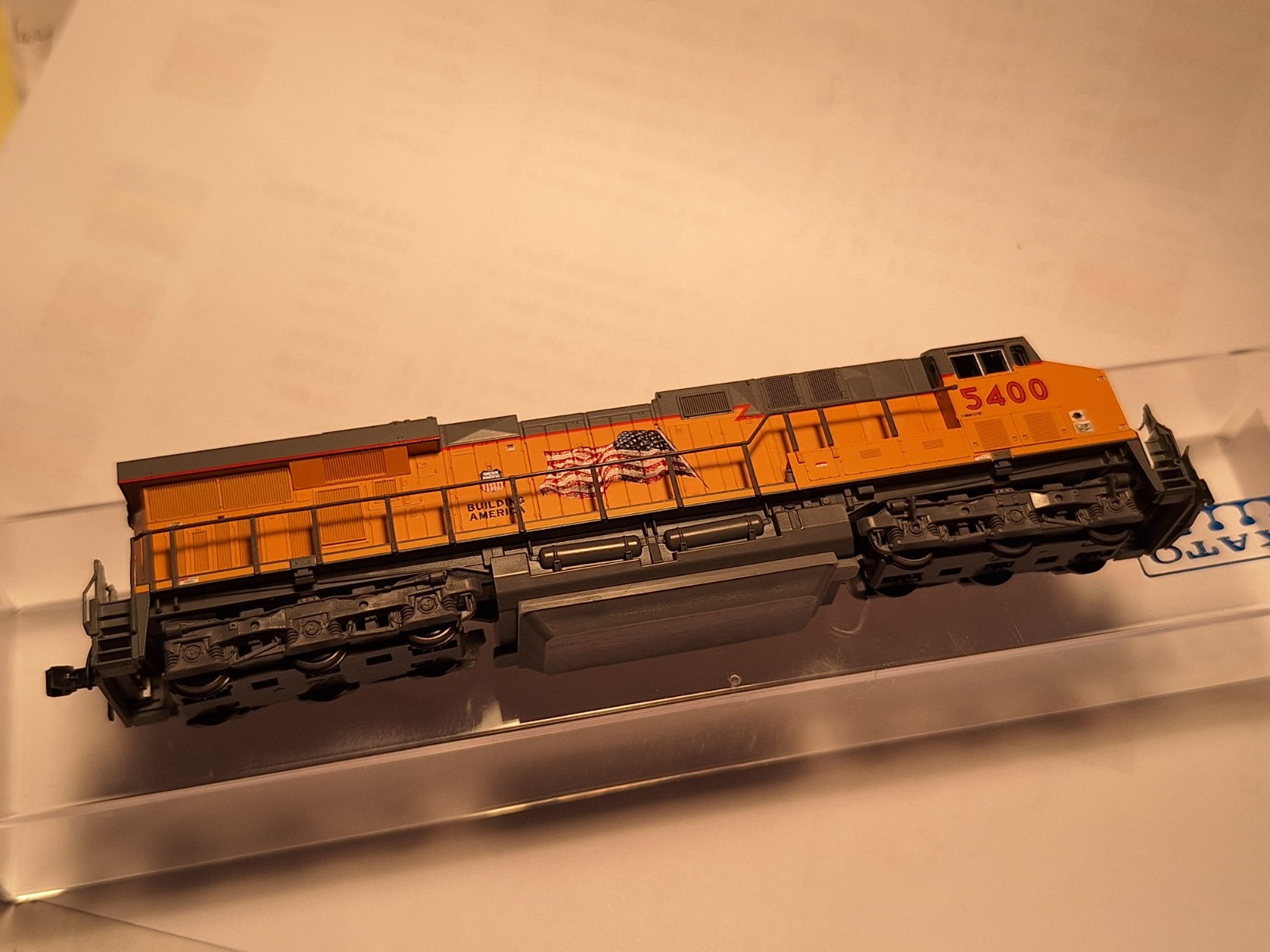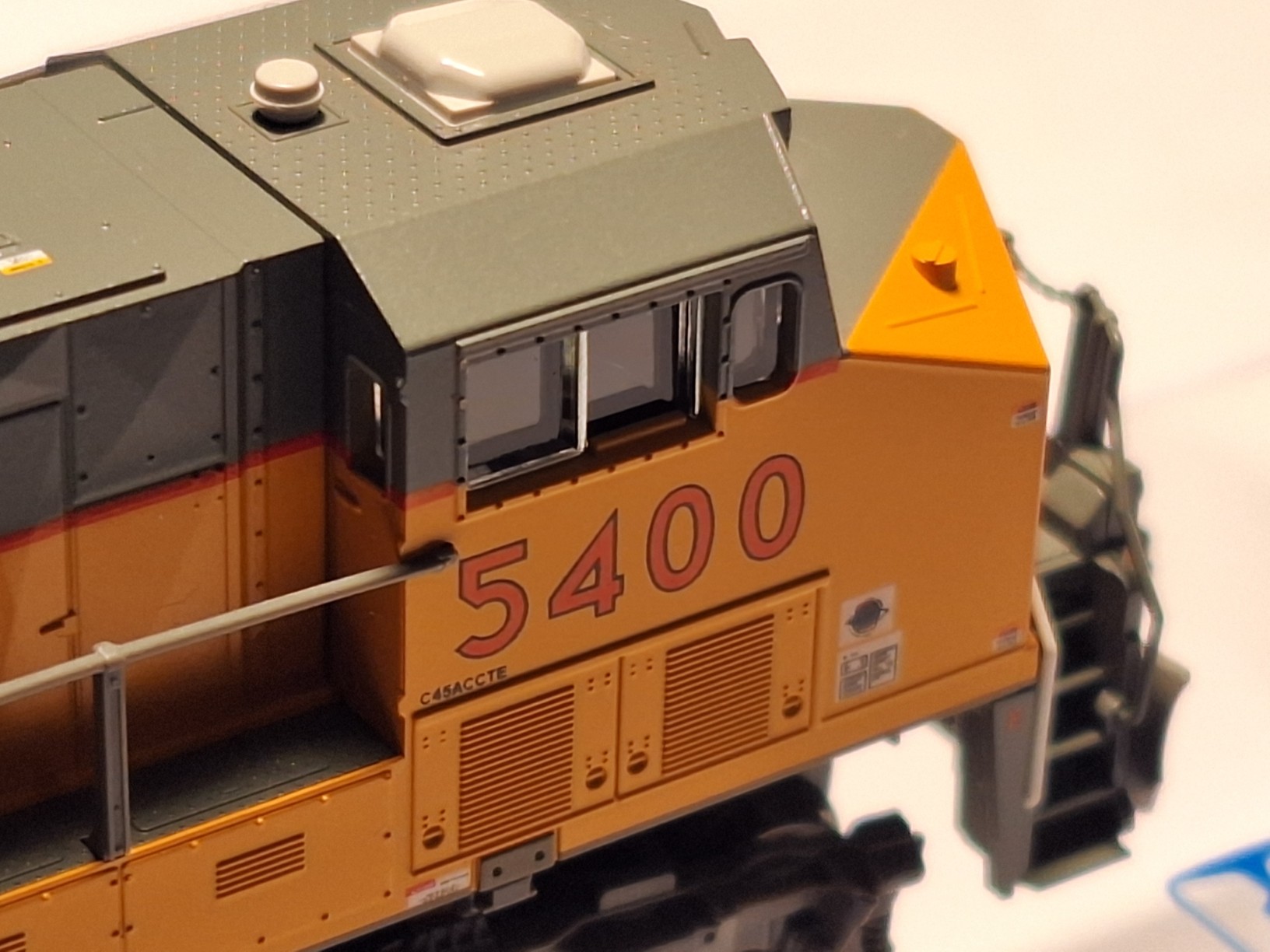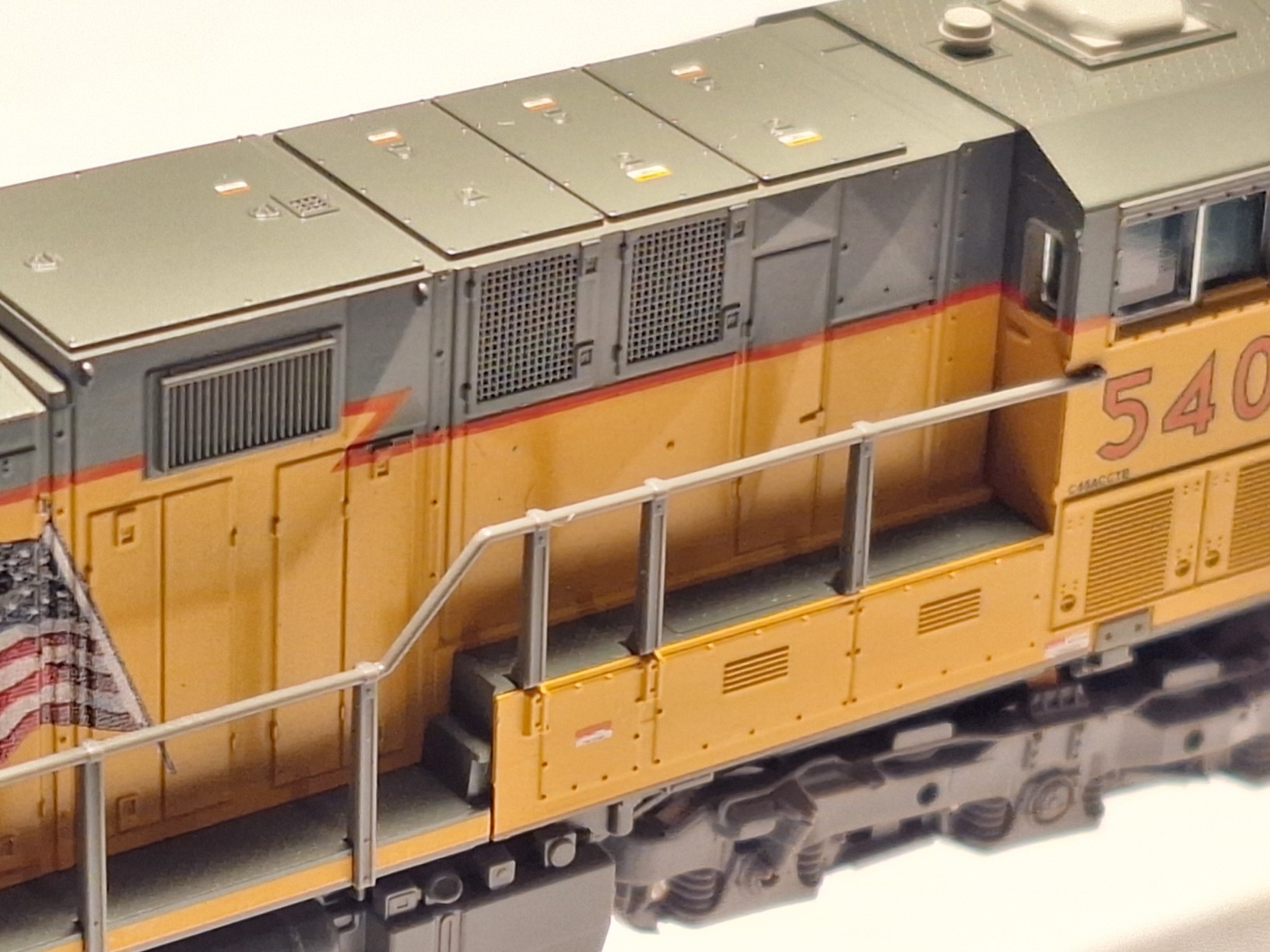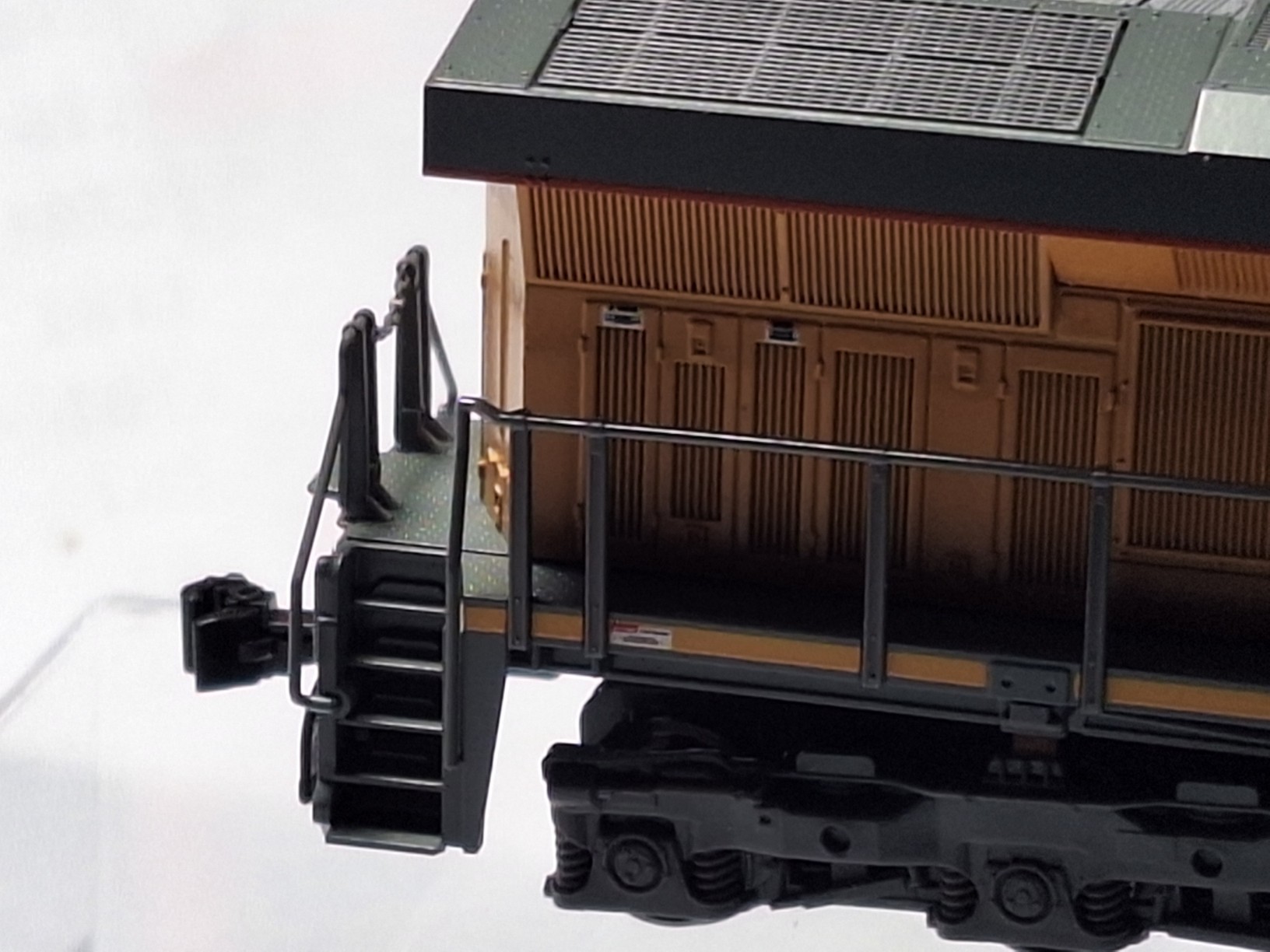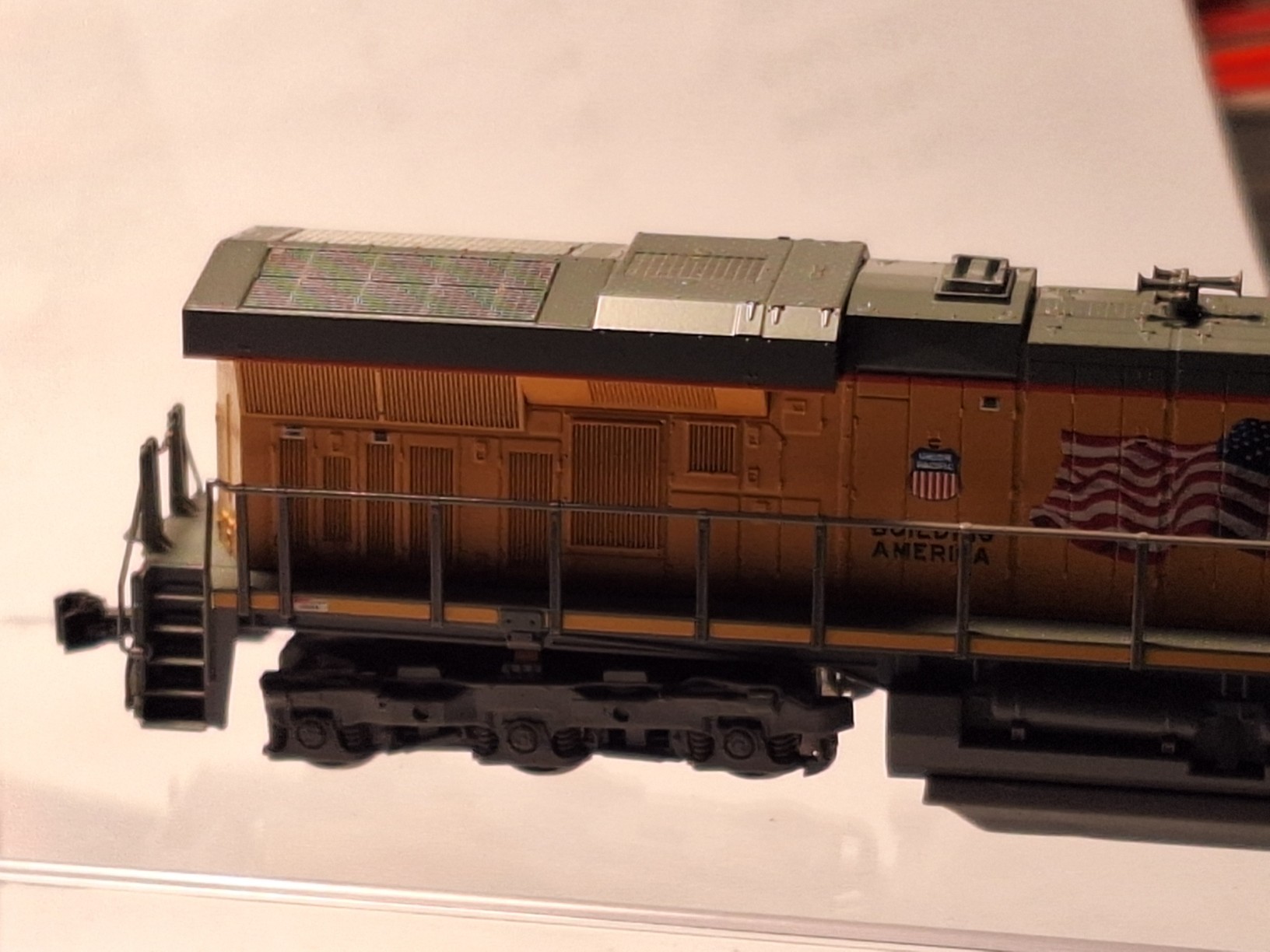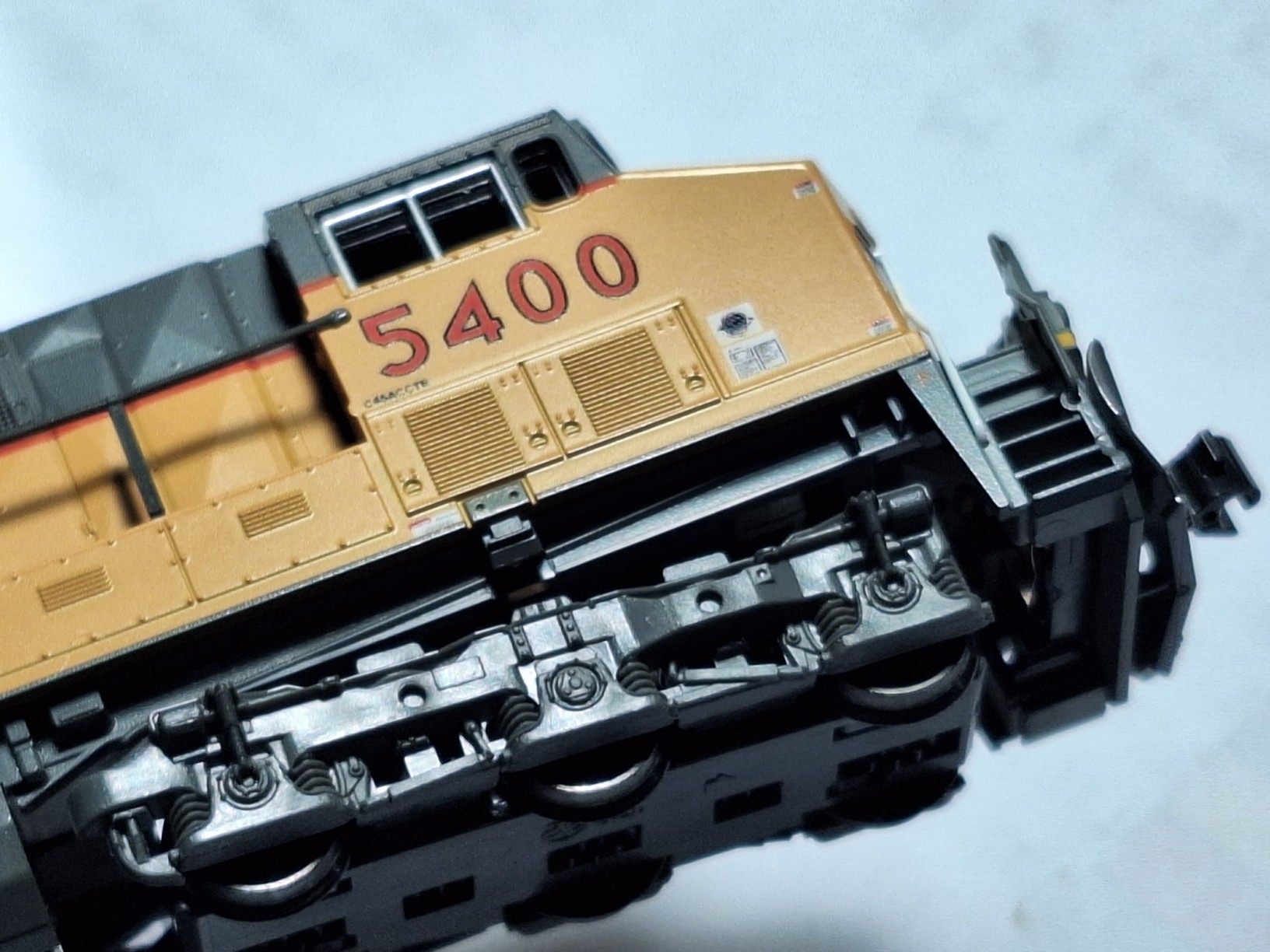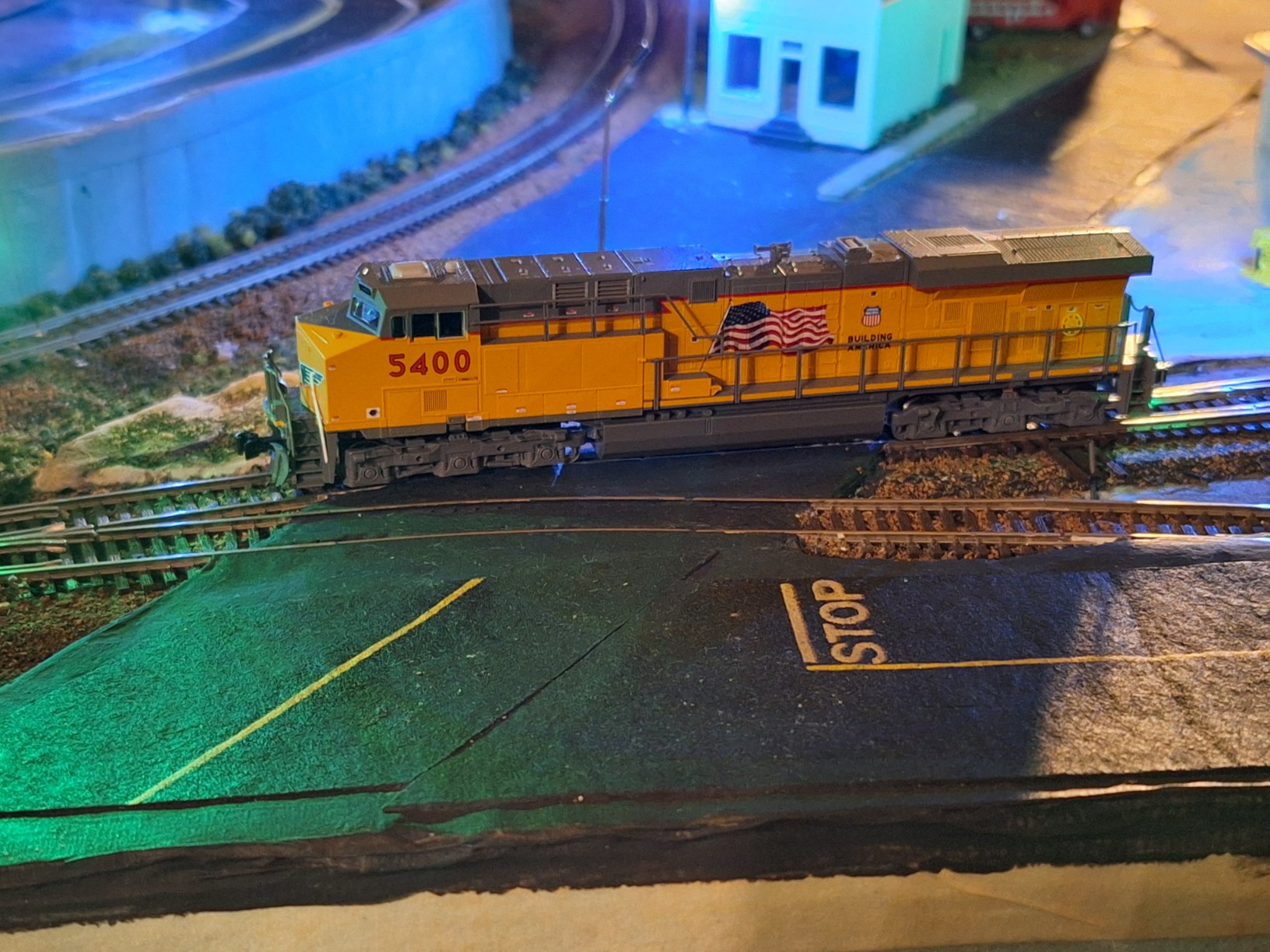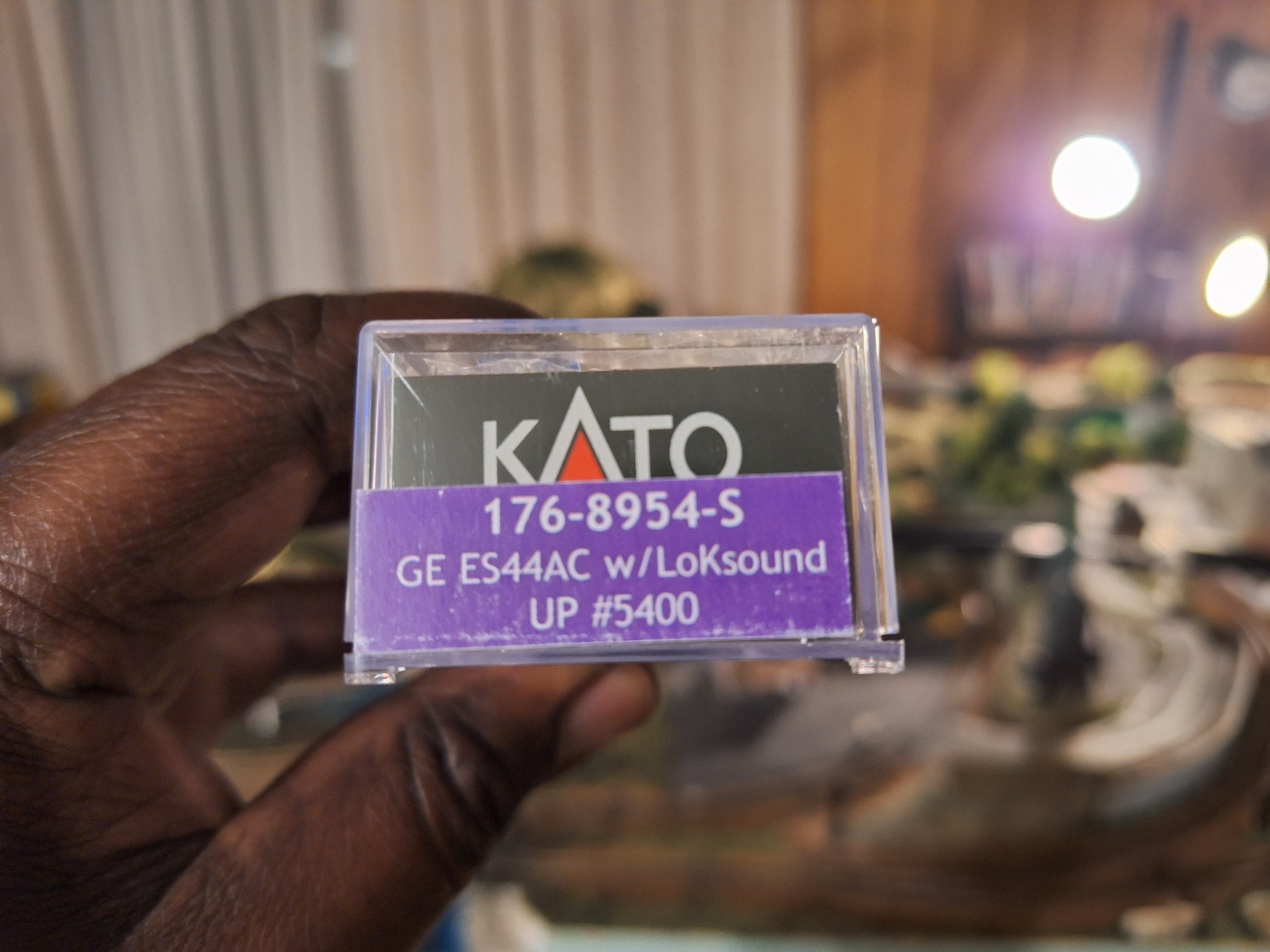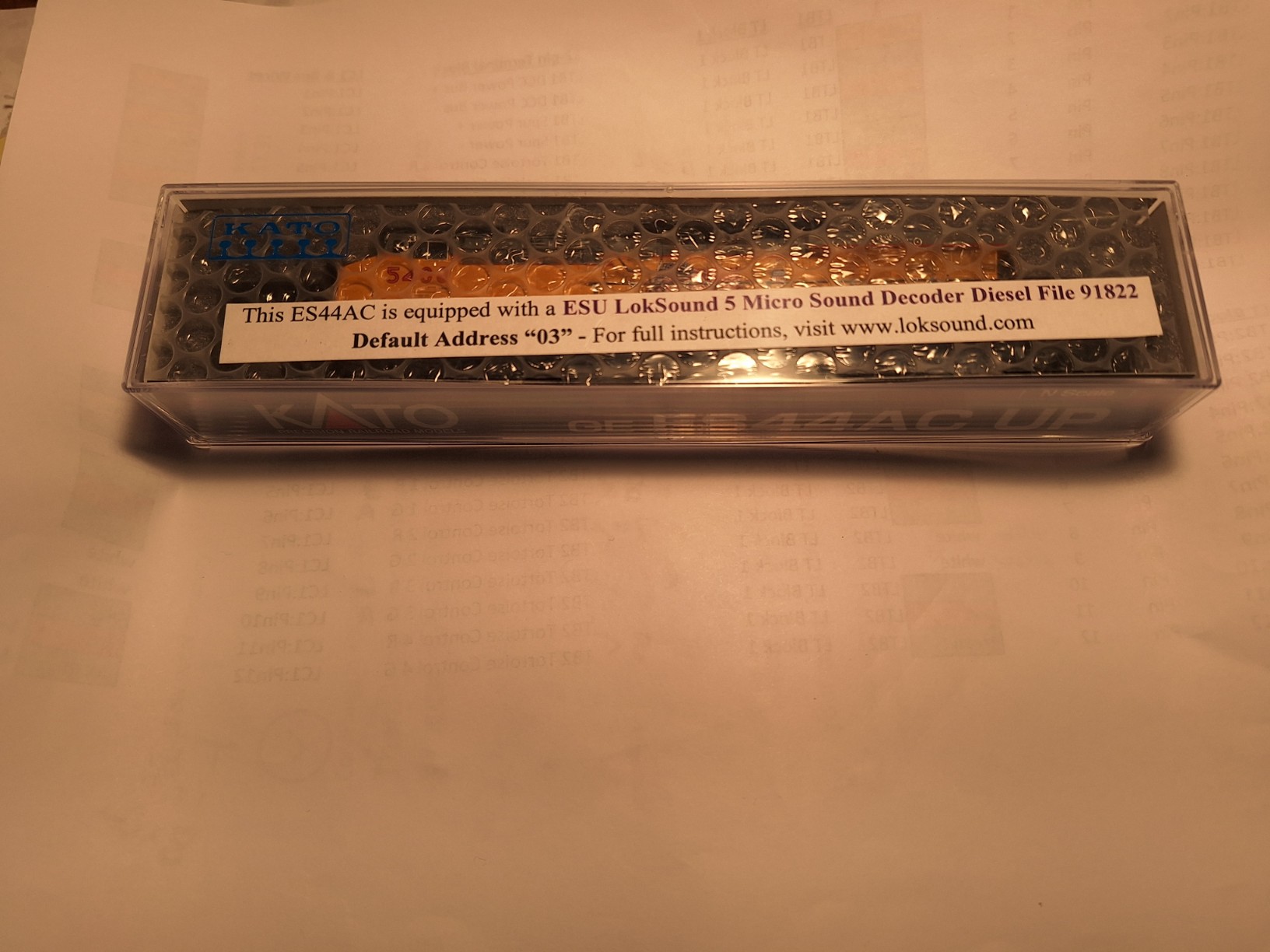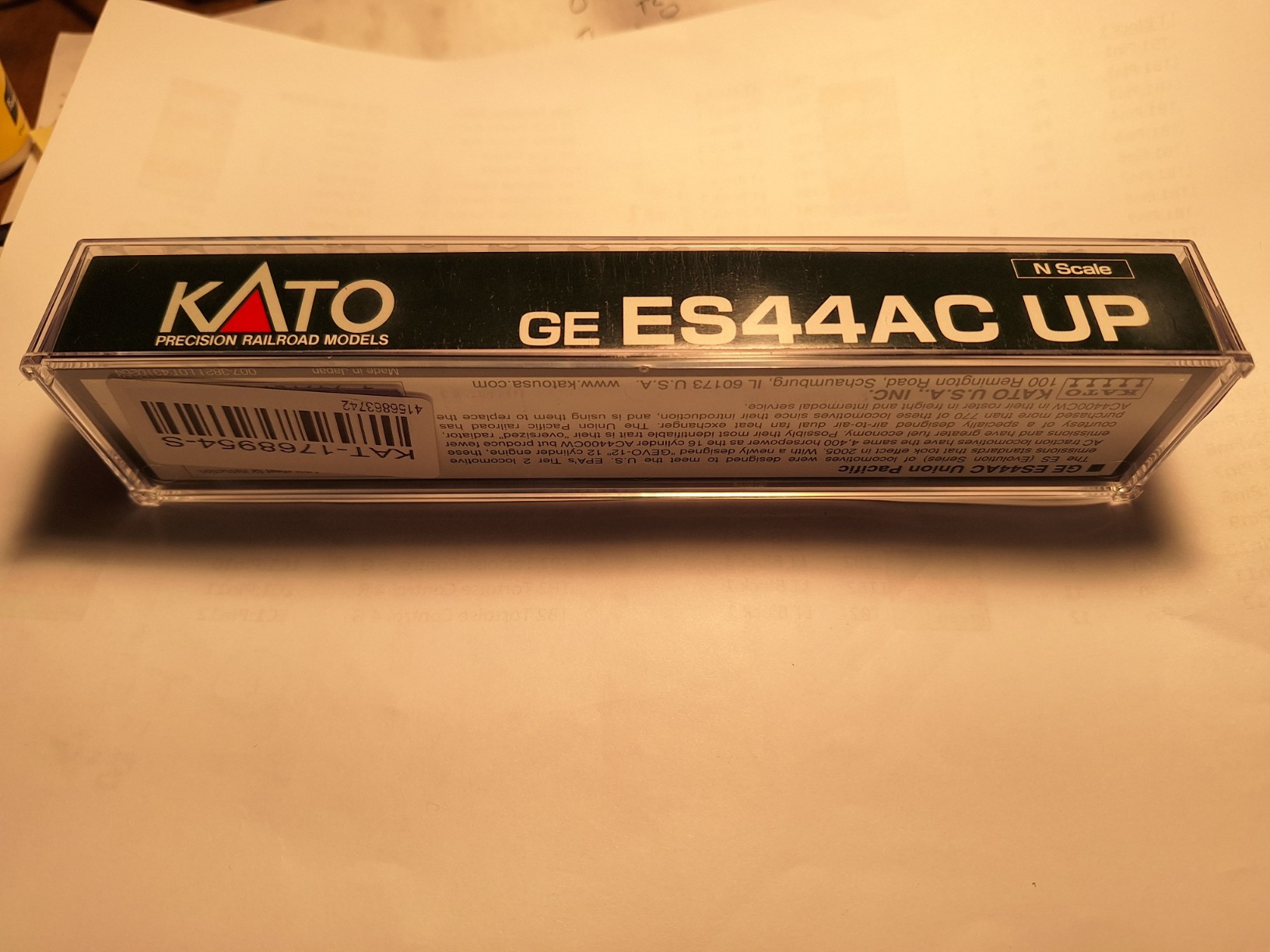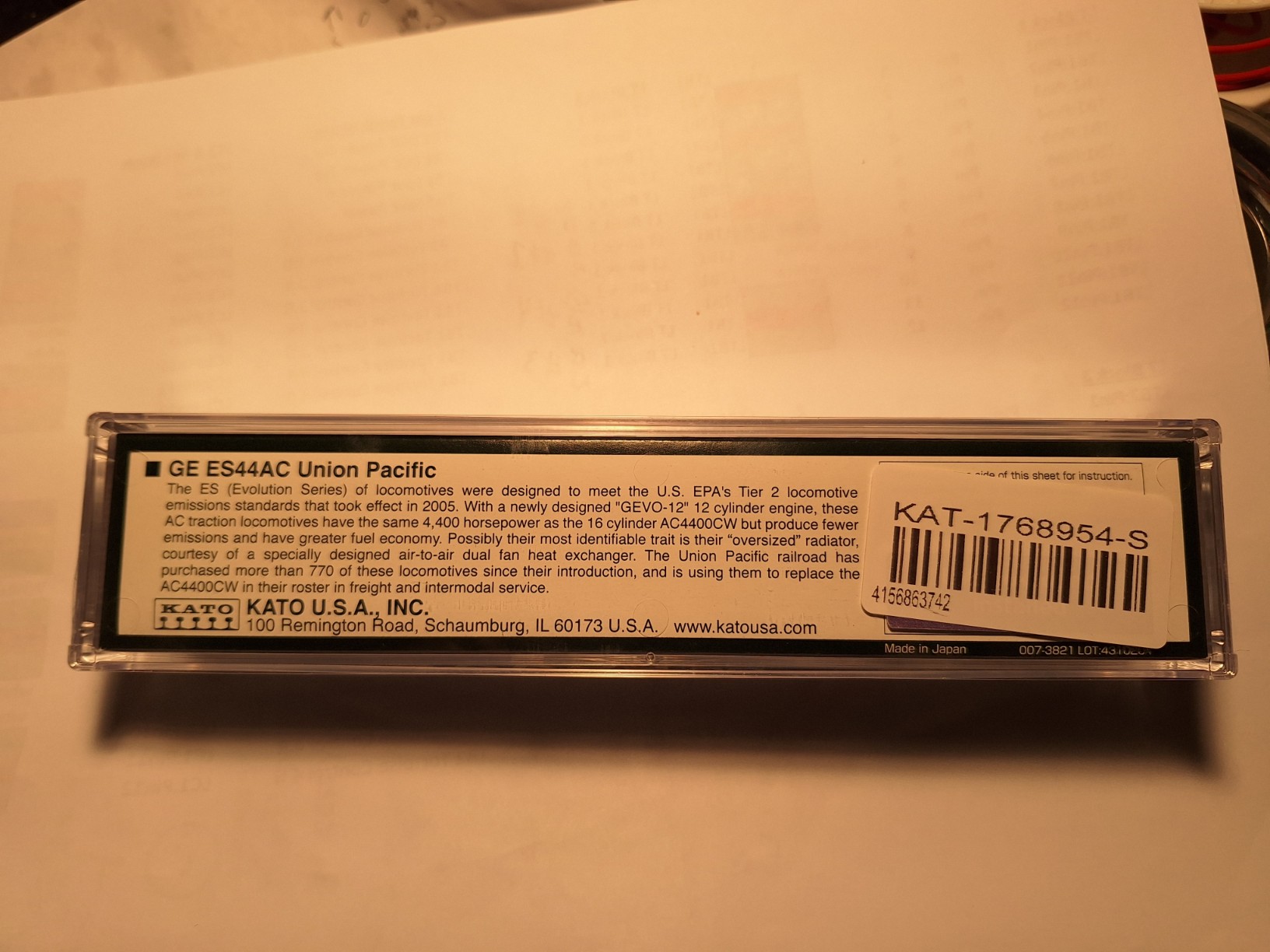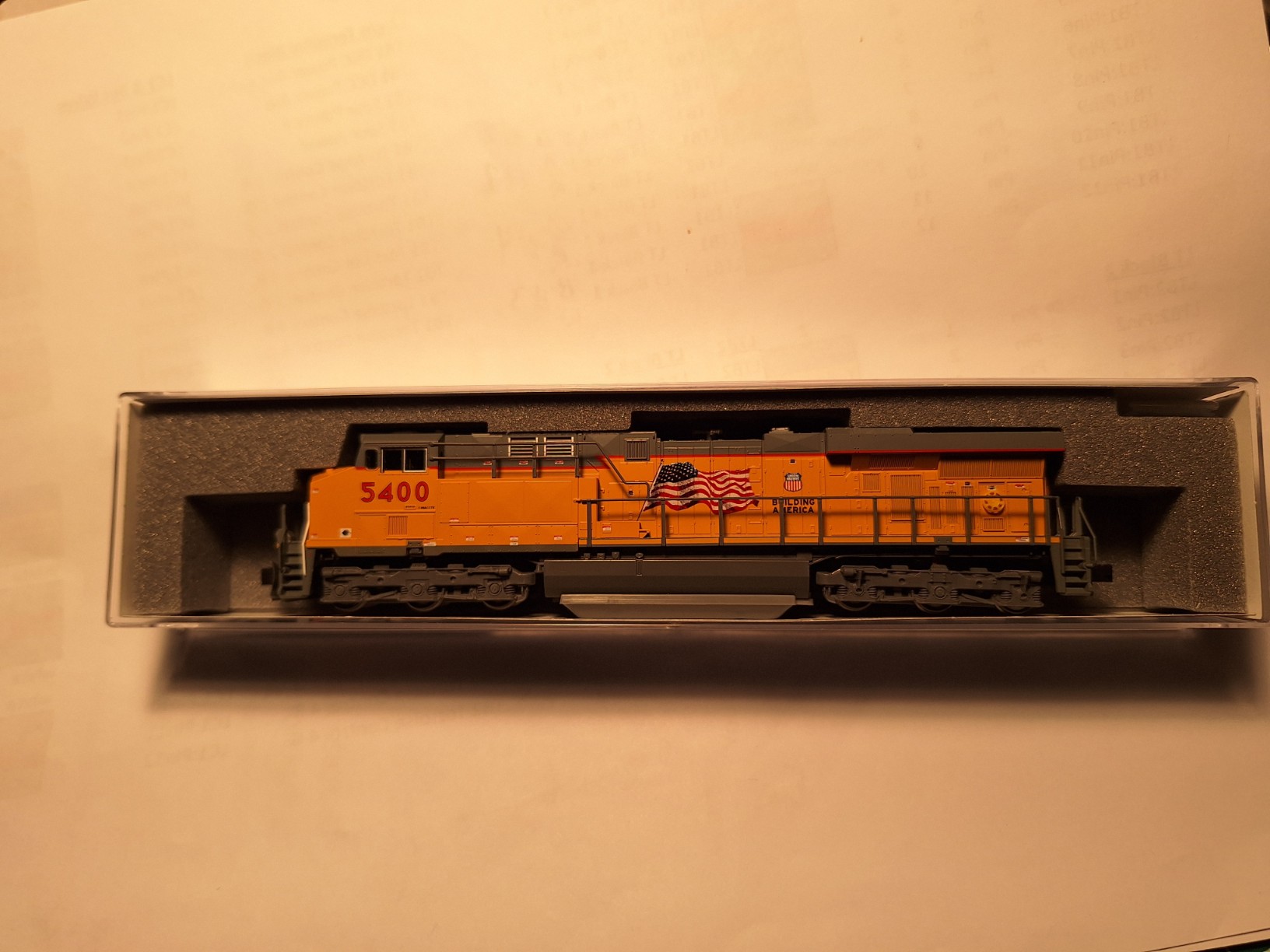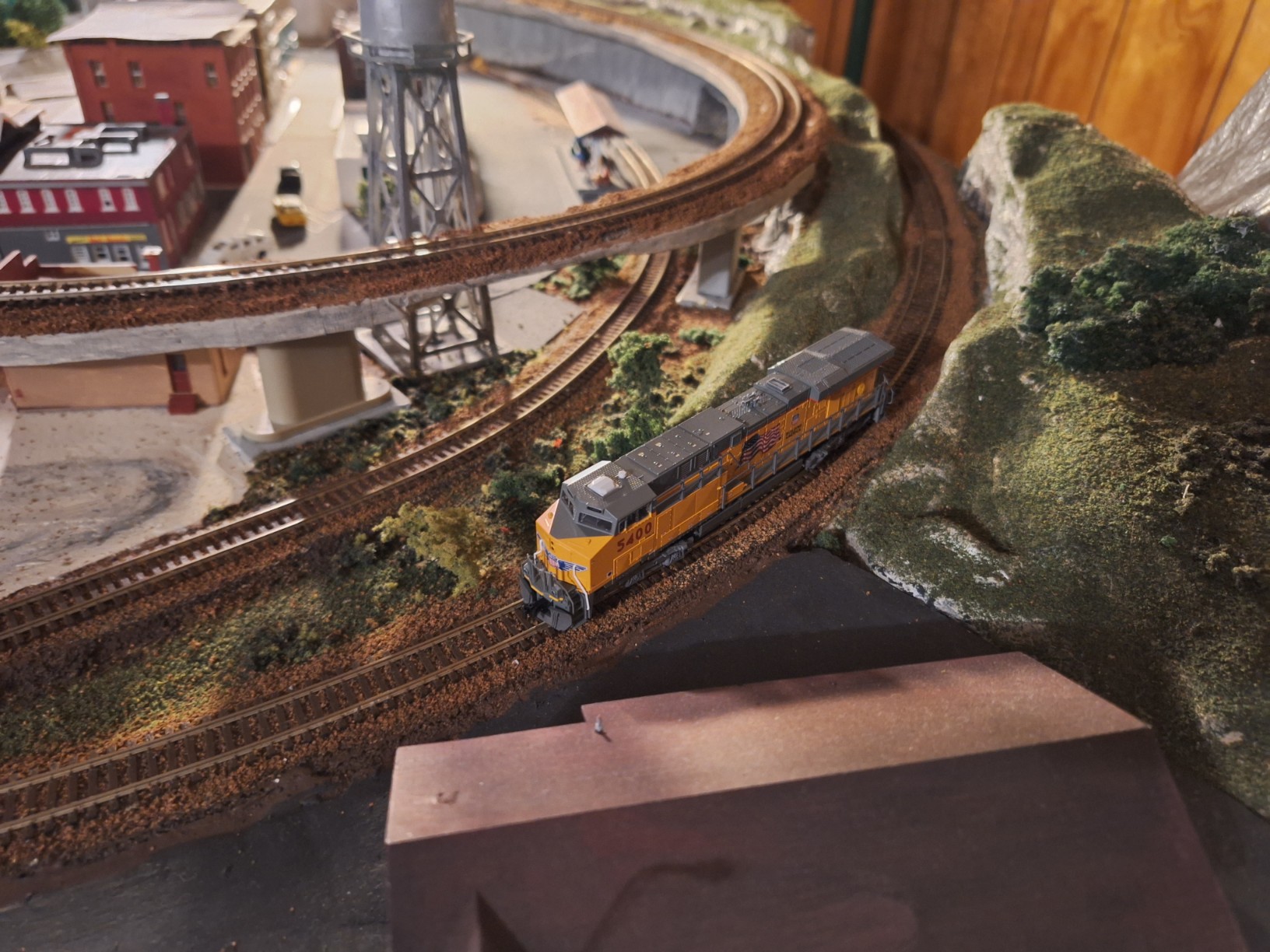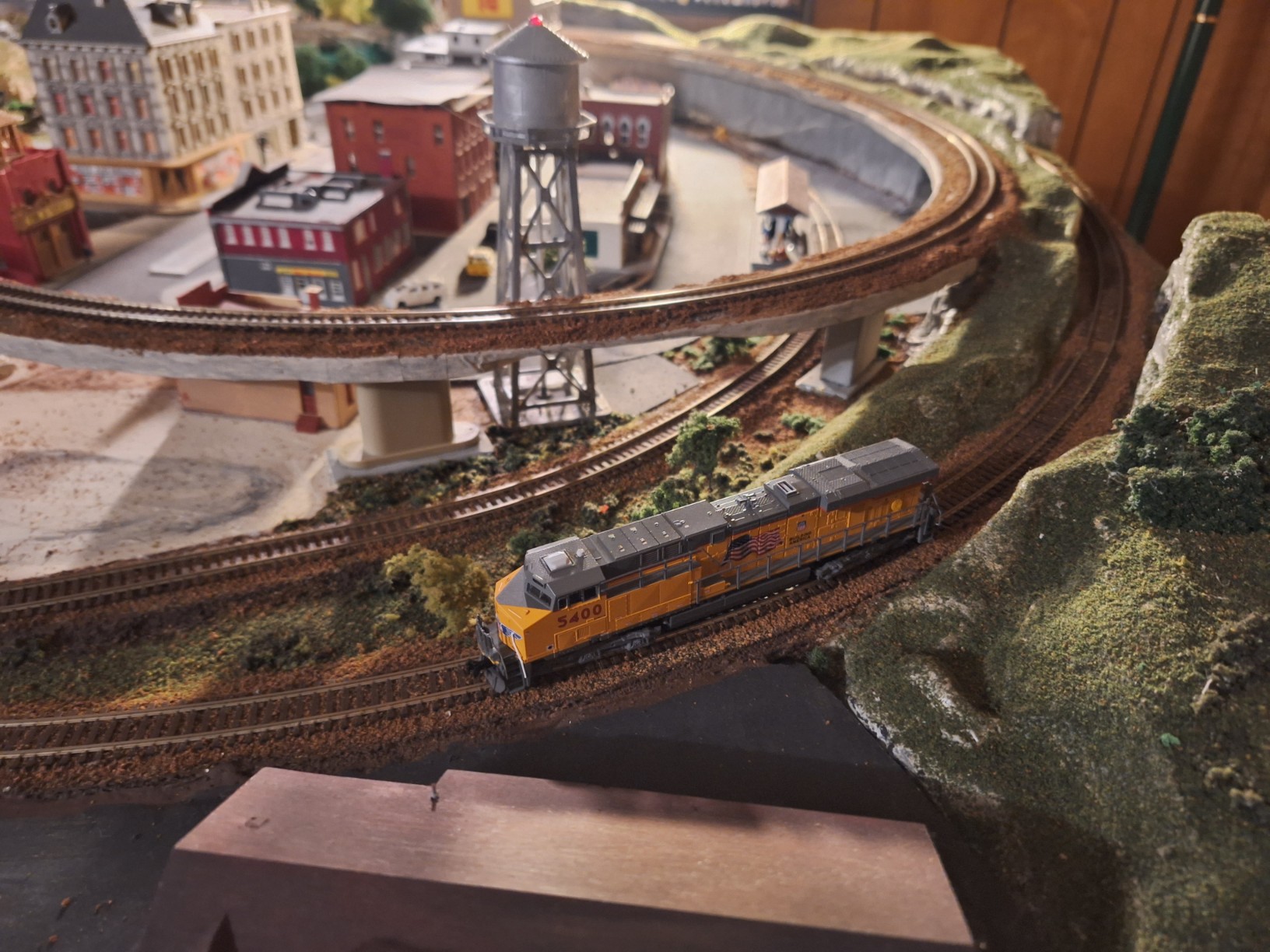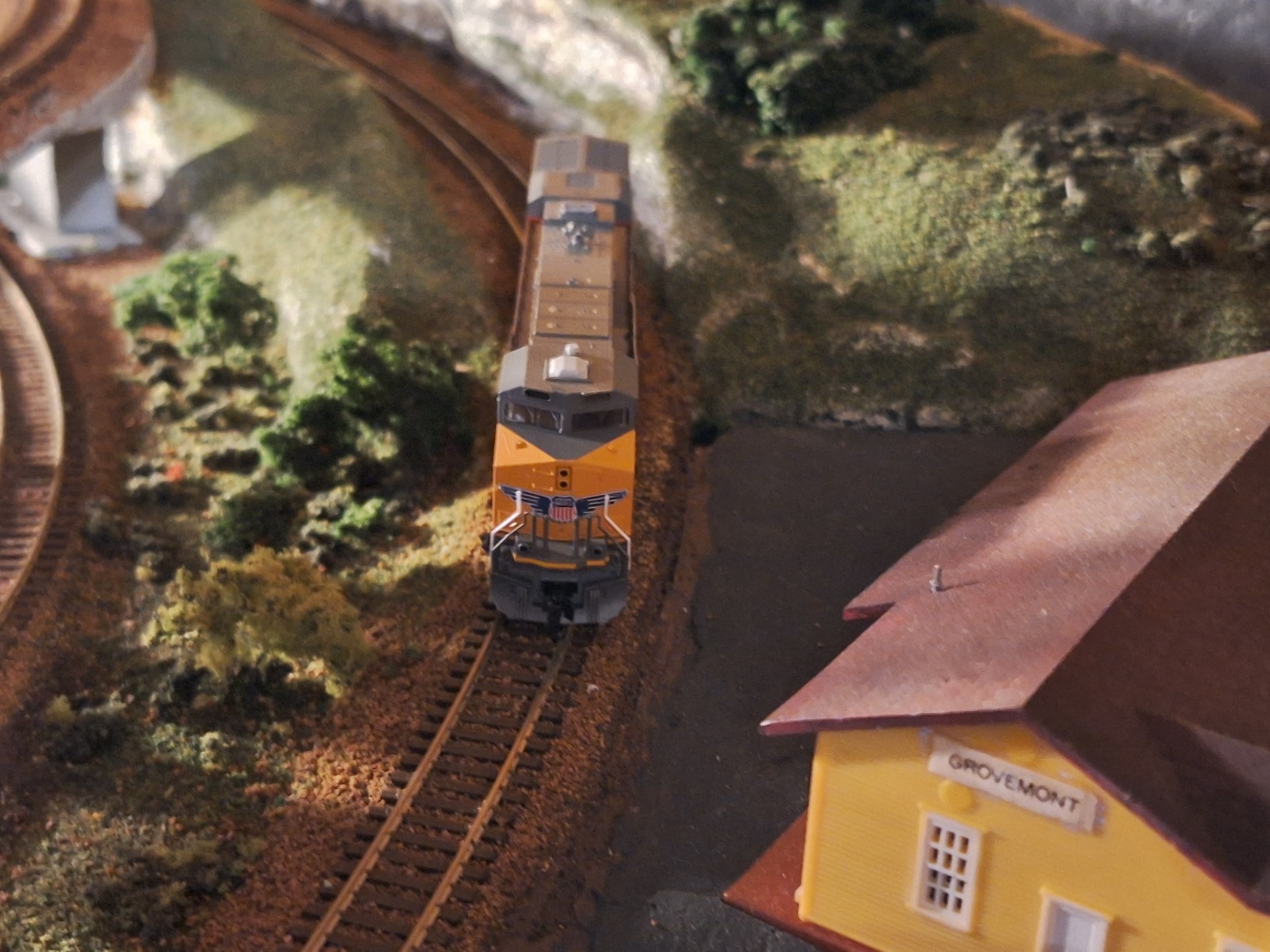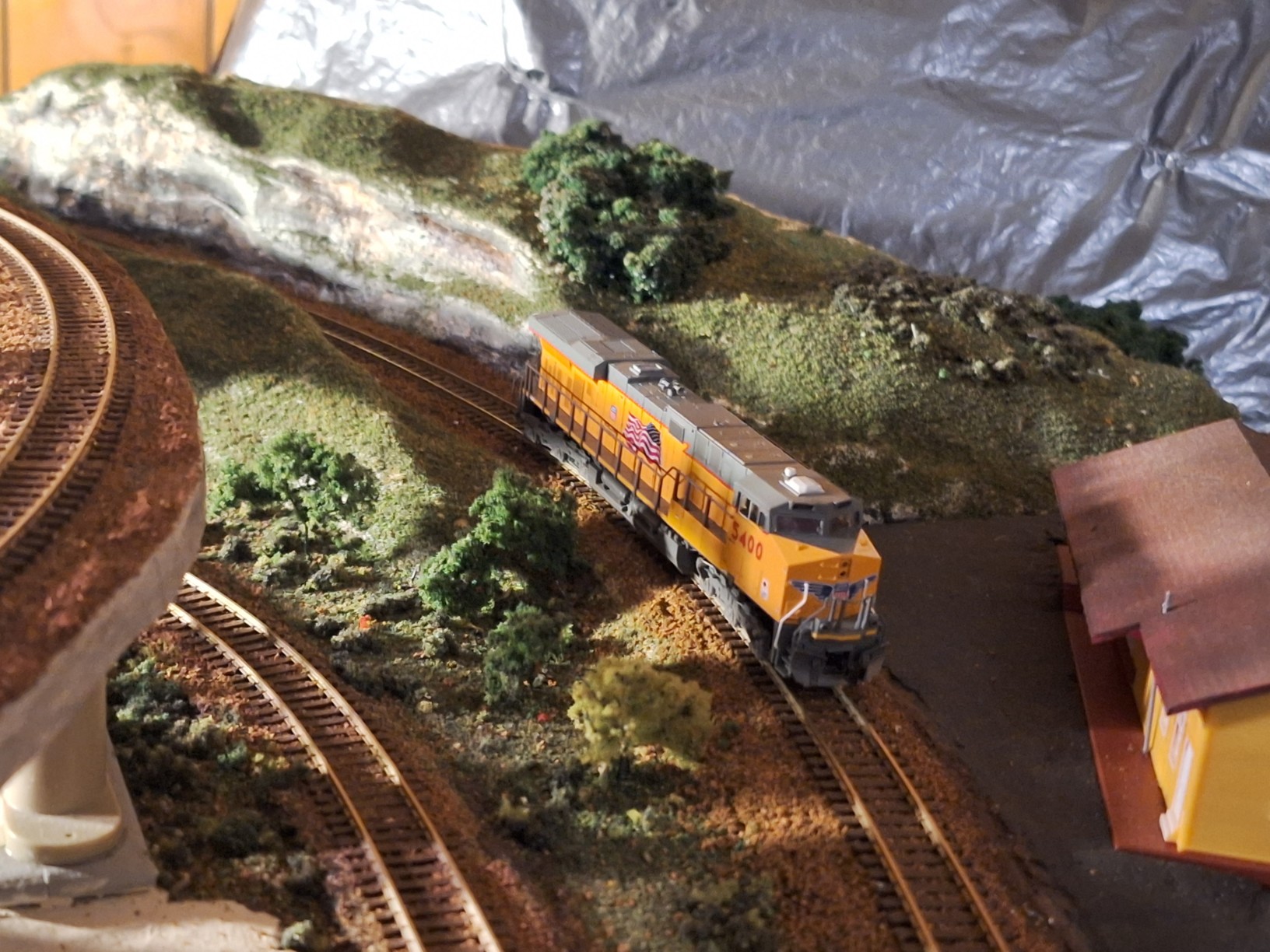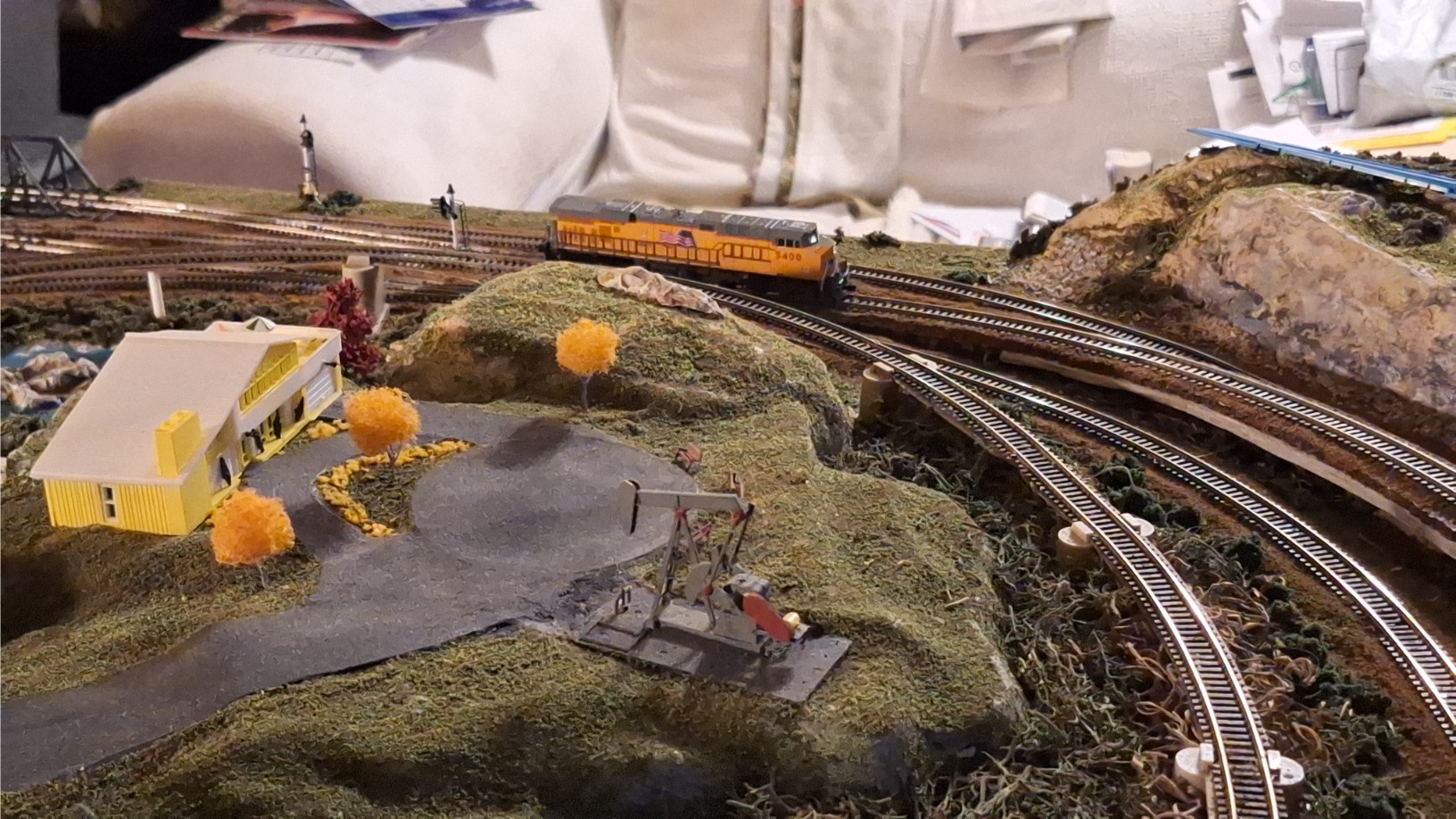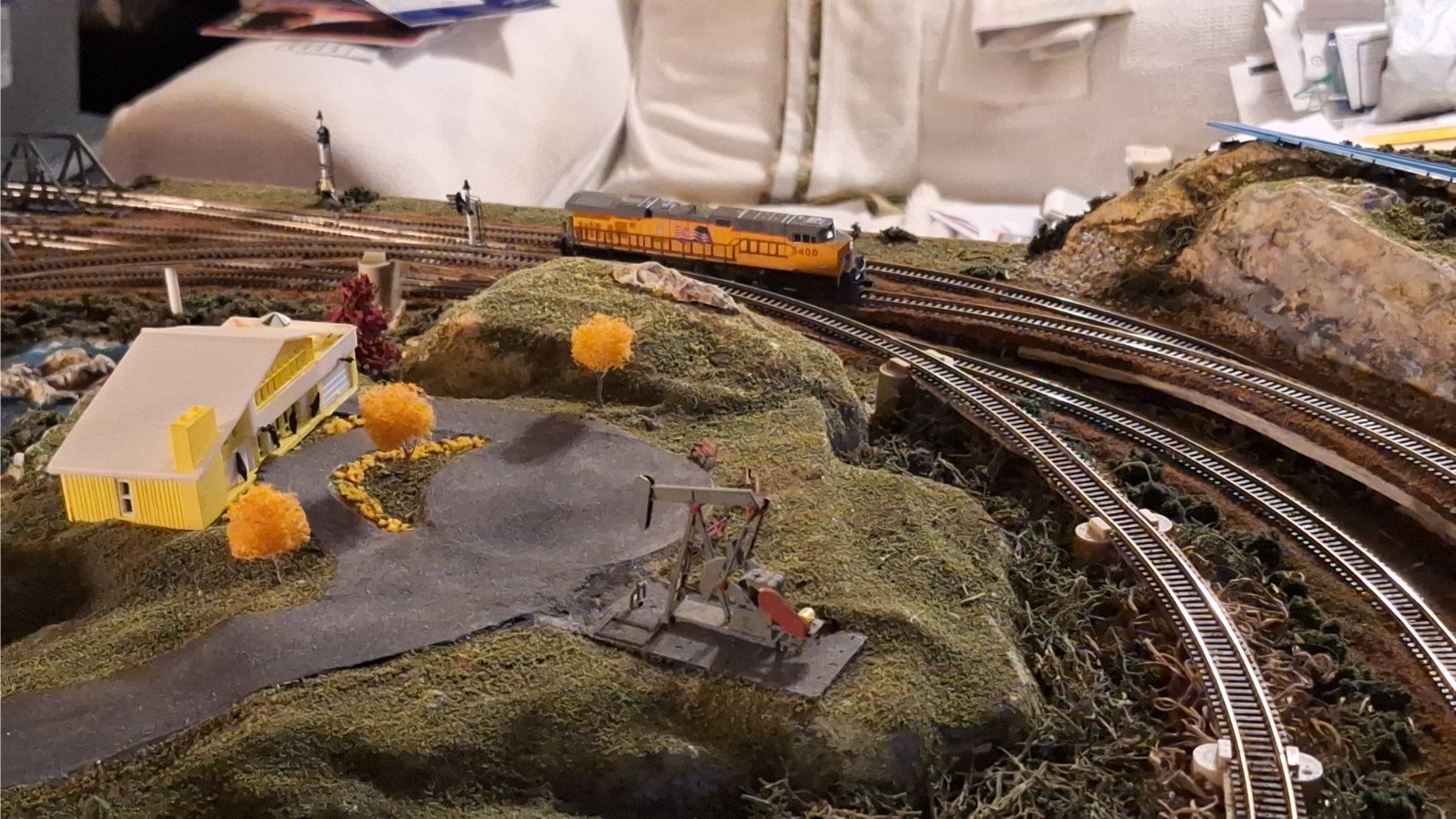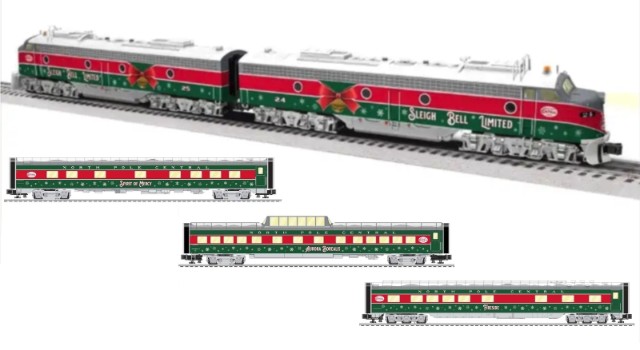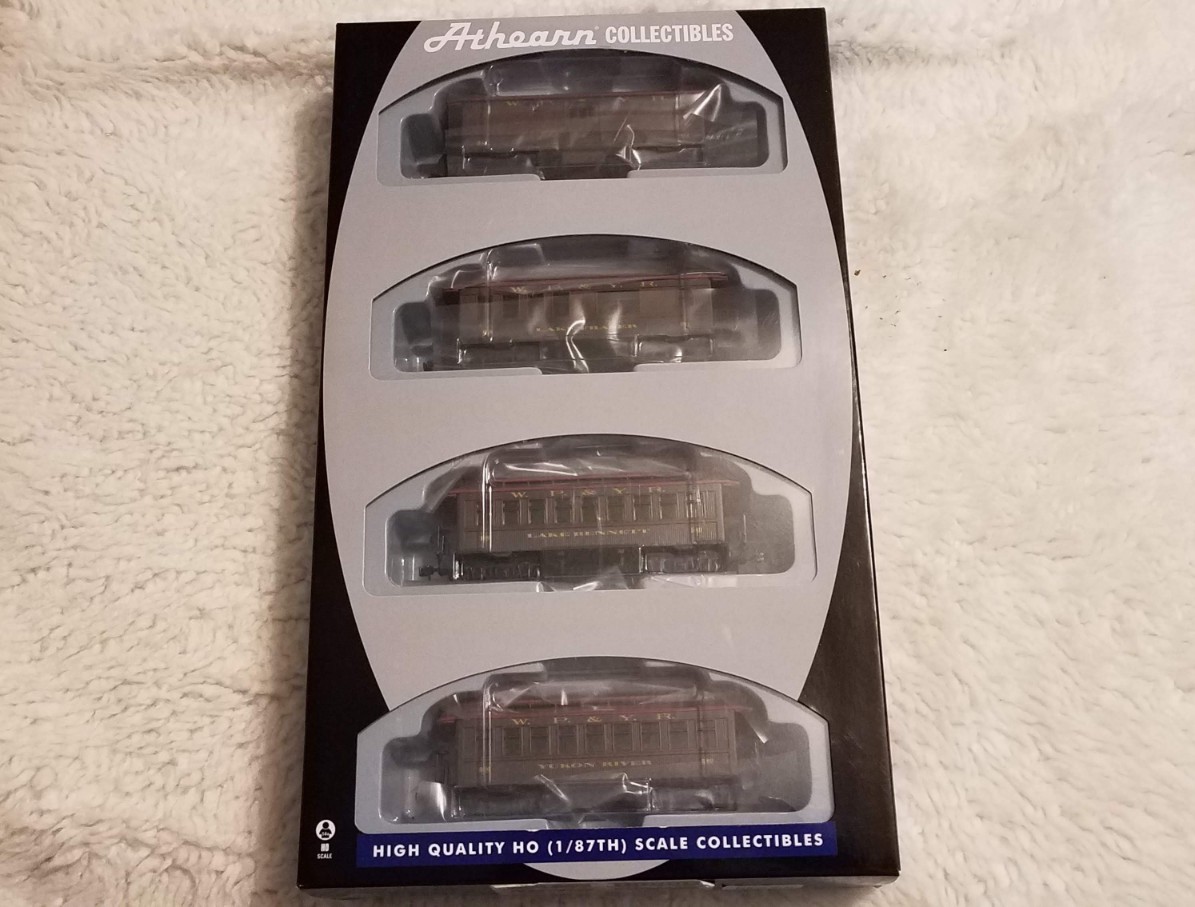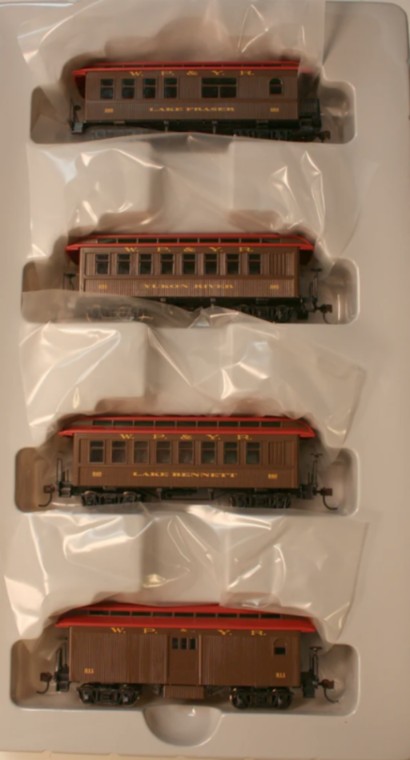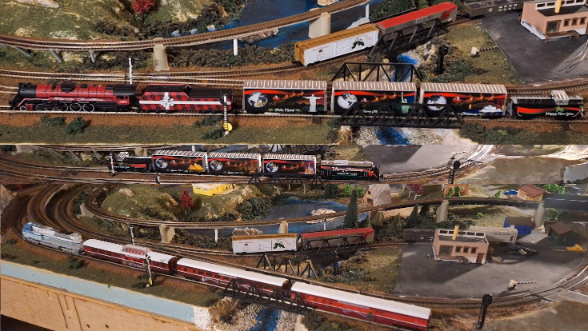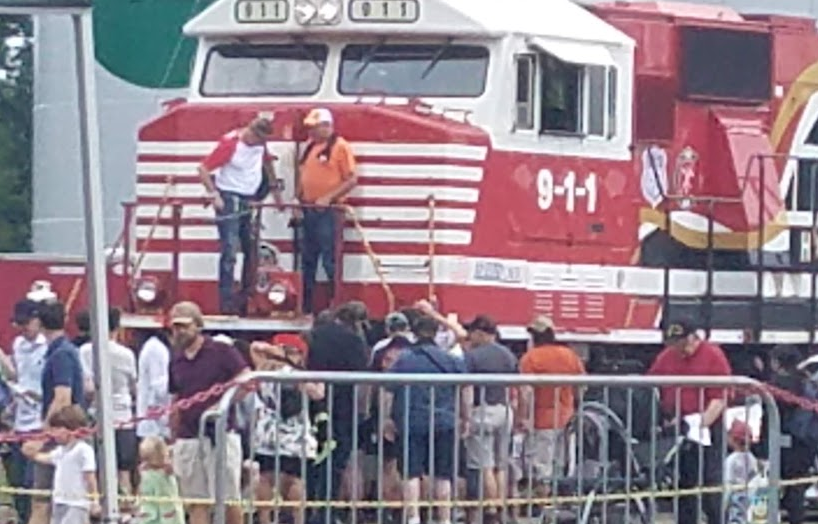
This page will provide you with some tips on HOW TO SELL TRAINS that You Inherited or You Own.
If you search the internet for phrases like “how to sell trains”, “how to sell my trains”, “sell my trains”, or “buy my trains”, you will get a lot of results from different people and companies suggesting to you various ways to sell your trains. Most of the information can be very helpful. Some of it will be biased as it should be depending on the source of the information and the source’s reason for providing the information.
I am a member of the Metrolina Model Railroader’s club. I happened to be the club’s Webmaster. This year, 2024, we received messages from people asking us if we (the club) would buy their trains, trains they inherited, trains one of their family members or friends inherited, or if we knew others that would buy their trains. Practically every time someone contacted us, they were not REALLY prepared to sell any trains to anyone. Most of them felt as if simply telling us that they had a lot of model trains to sell would be enough for us to consider buying them. IT IS NOT! I will explain why a little later on this page. Because I have answered the majority of those emails, I felt it necessary to put together this article on How to sell trains! I will be referring everyone that contact’s our club trying to sell us trains to this article. Eventually, a duplicate of this article may be placed on the Metrolina Model Railroader’s website as well. For that to happen, the club members will have to view this message and collectively make a decision on that.
Most of the information you can find on how to sell trains can be useful. So, let’s dig in and see if the following information on how to sell trains is useful to you.
The best way for me to help everyone is to allow you to tailor the information to your specific scenario by asking you questions that will help lead you to the best approaches for you to take to sell trains.
How are you related to the trains you wish to sell?
Are you the original purchaser of the trains?
Did you inherit the trains?
Do the trains belong to someone else and you are trying to help them sell trains?
How much do you know about the trains you are wanting to sell?
Nothing.
A little bit.
A lot.
Almost everything.
Do you have a list of the trains you wish to sell?
Yes.
No.
I’m working on it.
I don’t wish to try to identify the trains.
I don’t know anything about them so I cannot successfully make a list.
Have you taken photos of the train items?
Yes, I took multiple pictures of individual items.
Yes, I took pictures of groups of items.
Yes, I took pictures of the entire collection as best I could.
No.
I don’t want to take any photos.
Do you know the condition of the trains?
Yes.
No.
Do you know how much money you want for the trains?
Yes.
No.
As you can determine by the questions above, the more familiarity you have with the trains, the more likely you will be capable of selling the trains. Most train buyers KNOW what they wish to buy. So, the easiest way to sell trains is to let others know exactly what it is that you have for sale. At a bare minimum, you may need to know the following about the trains your are trying to sell:
Scale or Gauge = The ratio of the model to real previously or existing train item / prototype. For instance, HO scale trains are 1/87th the size of real trains.
Manufacturer and/or Brand = The company that produces and/or distributes the train item. Examples: American Flyer, Athearn, Bachmann, Con-cor, Herpa, Hornsby, Kato, Lionel, Marks, Rapido, Rivarossi, Scale Trains, Stewart, Tyco, Walthers. Many manufacturers have multiple brands too, such as: Bachmann: Plasticville, Spectrum Big Haulers, Williams, SoundValue, etc.; ScaleTrains: Kit Classics, Operator, Rivet Counter, etc.; Lionel: Porter, American Flyer, Racing, etc.; and Walthers: Cornerstone, Mainline, Trainline, Proto, etc…
Roadname(s) = The name of the railroad that the model train item is a representation of. Examples: Amtrak, Atlantic Coast Line, BNSF, Canadian Pacific, Chicago, Burlington & Quincy, Delaware & Hudson, Kansas City Southern, Norfolk Southern, Northern Pacific, Pennsylvania Railroad, Santa Fe, Southern Pacific, Via Rail, White Pass & Yukon Route.
Train type or train related item type = The type of item being sold. Examples: Trains: Locomotive, Caboose, Gondola, Flatcar, Boxcar, Passenger Car, Hopper Car; Tracks: Straight, Curve, Turnout, Switch Track, Bumper, Crossing Track, Flex Track, Buildings: Train Station, House, Car Wash, Church, Industrial Building, ; Structures: Bridges, Ramps, Signals, Towers, Tunnel Portals, Culverts; Accessories: Telephone Poles, Road Signs, Benches, Vehicles: cars, boats, trucks, containers, trailers, vans; Electronics: Transformers, Throttles, Command Stations, Boosters, Switches, Circuits, Terminals, Lights, LEDs; Scenery: Ground Cover, Trees, Grass, Rocks, Mountains, Plaster, Paint, …
Condition = New, Used, Good, Bad, Poor, Very Good, Great, Excellent, Like New, Works, Broken, Unknown, Not Evaluated.
Other things to say about the trains you wish to sell:
In my opinion, it is good idea to provide as much of the following information as you can. Not everyone agrees with me on this and people have been successful selling with and without providing a lot of information. Some people believe that a picture is worth a thousand words. That may be true, but when I look at a picture of an item without a good description of with very little descriptions, it typically simply generates questions, which delays my personal purchase, but I will ask questions about an item before buying it. If the seller doesn’t answer, I usually won’t buy it. When selling, I do my best to provide as much information as possible to prevent potential buyers from making up their on conclusions about something and to dissuade them from taking up more of my time by asking me questions that if I knew the answer to, I already provided the information. Invariably, unless all the items you are selling are extremely well-known by name or by photo, you will probably get asked questions. Knowing and providing an answer to the questions if also tricky. Why? Because some people hope you don’t know the answer which means you probably do not know much about what you are selling and thus they may likely take advantage of you. Providing an answer might prove to the buyer that THEY don’t know much about what they are buying and cause them to delay longer in making a decision because they have to deliberate on it longer or go research what they don’t know so that they feel more comfortable making a buying decision.
You don’t have to be an expert on everything you are selling, but the more you know about the item you are selling, the better chance you can offer it for a fair price and get a fair price for it. However, do not get discouraged if no one is willing to pay what you feel an item is worth. A buyer is only going to pay what it is worth to them, or they will keep looking for the item elsewhere until they find one priced to suit them. If you are flexible, willing to negotiate and able to negotiate the selling price of your items, you will probably sell more items. Unfortunately, you may not always be in control of what prices your items sell for. For example, if you put your items up for sale in an auction environment, you may be able to control an item’s beginning price which must be low enough to entice buyers to have any interest in it at all, but after the bidding starts, you typically have very little control over the winning price. Most auctioneers and sites make you agree to sell an item at its winning bid regardless of how low that is. Some auctioneers allow you to set a price point that if that point is not met, the winning bidder isn’t allow to purchase the item. the selling point is usually not revealed to the bidders. But, most bidders who win an auction but still are not able to acquire the item for their highest bid, will typically not bid on anything else you ever try to sell, because that is not an enjoyable experience.
In my opinion, it is a good idea to know the following about trains and train related items you wish to sell:
An Asking Price.
A Description of each item (the more detailed, the better).
Is an item functioning or operational? (For instance, if it is a train car, does it have all of its wheels and will it successfully roll appropriately on the tracks it was made to roll on? If it is a locomotive, does the locomotive power on and off, have lights, bells, and whistlers that work, produce steam or smoke, contact to cars and pull them, etc.?)
Is the original box or packaging an item was sold in available and if so, what is its condition?
For electronic items, such as transformers (power packs), lights, bells, whistles, locomotives, lighted cars, animated devices, etc. — do the items work as they are supposed to work?
Sometimes, as a point of reference, the original purchase price and date of an item is good to know. You may not need to reveal this information, but you can use it to help set your asking price. So, do you know the price that was originally paid for the train related item(s) you are selling?
Sometimes, as a point of reference, the original purchase price and date of an item is good to know.
Be careful about knowing the original price, though and letting it influence your asking price. Generally speaking, TIME has elapsed between the date the item was manufactured and made ready for its original sale and the date you are trying to sell the item. In many cases, quite a lot of time has elapsed. As you can imagine, almost everything you can buy these days can go “ON SALE” and be sold at a discount below whatever its suggested retail price is and/or even any price physically attached to an item. Only the person that bought the item has the best recollection as to exactly what they paid for it. So, if you didn’t purchase the item you are trying to sell, relying on any price that you find on an item can be used as a possible value for it whenever it was purchased. The price printed on everything practically increases over the years. However, that doesn’t mean that the real VALUE of an item has increased. The cost of producing an item that was made 20, 30, 40 or more years ago has certainly gone up. Some manufacturers are still using the same molds that were used a while back to produce the exact same items today as they did eons ago. Some manufacturers have changed, updated, and enhanced their tooling’s and molds. So, you may be trying to sell an item that you located online that was just produced earlier this year selling for an exciting whirlwind of a price, and because you have one that was produced 30 years ago that is still NEW in the Box, you may think you should put the same price on the one you have for sell as the one you found online. Well, although they may look the same, there can be a lot of differences. Below is a real example:
44 years ago I bought some trains the day after Christmas at a Hobby store in a mall. Within 2 years of buying them, I put away those trains and stored them in their original packaging in a sealed trunk. They stayed there for 30 years, untouched. About 15 years ago, I removed my trains from the trunk. 14 years ago, I looked those items up. I found some of the EXACT items I owned selling USED for 700% more than what I paid for them. I found some items newly manufactured selling NEW for 1400% more than what I paid for mine. 14 years ago, the manufacturer was still using the same tooling or very similar molds they used 44 years ago. Since then, that manufacturer has changed practically all of their tooling, and now produce newer versions of those cars. Right after typing that line, I visited that manufacturer’s website and I just pulled up one of the exact train cars that I own from 44 years ago, and right this moment the retail price that they are selling those trains for are 4500% more than what I paid for mine. The new version of the car probably is made of plastic that is thinner than the plastic on my cars, however, the new car has precision graphics, blackened-metal wheels with RP25 contours; body-mounted, magnetically operated knuckle couplers; non-magnetic blackened brass axles with needle-point bearings, and added weight for optimum tracking performance. These are some real improvements on the ones that I have with the exception of the thickness of the plastic. I am GUESSING at the thickness of the plastic being thinner simply because most other cars of my teen era have thinner plastic than their more recently manufactured models. I still have my trains from 44 years ago. They are still in great working condition and are stored in their original boxes. I have moved them from the trunk though and store them elsewhere. The wheels have a pewter ring over plastic insets which when I encounter a lot of these from other people who ran these cars many moons ago, the pewter outer bracket / tire of the wheel has separated from the inner plastic core and those wheels mostly have to be replaced in order for such train cars to be operational. I have a few of these cars in collections that I have acquired since getting back into the hobby in 2010 and I have tried to slip the metal ring back onto the plastic core, and thus far, that doesn’t last long or fails immediately in most cases. Also, those cars have a coupler on them that is not a knuckle coupler and will not connect to newer train cars that have knuckle couplers. Can I still run them? Yes. Do I? Occasionally I will bring some out and run them, so the answer is yes. Can I put the same price on them as the new ones? Not if I want any sane person to buy them. A quick search on the internet though reveals that similar, used cars from the 1970s and 1980s are currently being advertised for sale at an average of 950% more than what I originally paid for mine. What use can you get out of this information? Well, my guess is that those people trying to sell those items at 950% more than what I paid for mine are probably having a very hard time getting rid of them right now. They are probably not moving as fast as they would like for them too. Yes, they probably sell one on occasion, mostly to someone who ran across the new prices of $45 each and decided they were okay buying some used ones for $9.50 each. If I were to sell mine which are in Great Shape inside of their original packaging that is also in Good, if not, Very Good condition, I would have much better sales results offering mine for anywhere between $5 and $7 each. And, if I offered a discount for buying something like 4 for $18, that would be a far more attractive offer over the one’s selling used today for $9.50 each and more. So, hopefully this will help you see why whatever pricing you have or find for the trains you wish to sell is mostly good as a reference to help you determine a good Asking price for the trains you wish to sell.
Rare, collectible trains that are highly sought after may not be affected by the normal pricing methods. What those trains are, I really don’t know. I know what trains I like and the ones that I am looking for. A few of those have become scarce and seller’s are really getting much higher prices for them than they should. But that is because they are so scarce and a lot of people are looking for the same trains that I am looking for, maybe even for the same reasons. So, when demand is high and supply is low, and you have the supply that is in high demand, you might be able to put staggering profitable prices on the trains you wish to sell and get every penny you ask for. To determine that, you are going to have to do a lot of time consuming monitoring of trains being sold via various platforms to see what is being consumed or you need a good contact working for a train store who can feed you intel on what visitors to their store are asking for or buying. If you have such an item, you might be like Jay Leno with his car collection: If you have something that is incredibly pristine and coveted that someone else is willing to pay an outrageous amount for, then by all means price it correctly and provide as much information as you can about it. But since most people have the same exact trains that were manufactured in lots of thousands at a time, it would be extremely rare for you to have anything so incredible that it should be sold outside normal, average price ranges that others are selling such items for. I keep looing for the things that I want. Some have come up. Sellers are removing trains from multipacks and selling each piece for 4 times the cost of the entire pack when it was originally released. I make reasonable offers on these when I can find them, but thus far, I have a let a lot of these go without showing very much interest at all. Eventually, some one will have what I am looking for at a price I am willing to pay for it. Or, I just won’t ever get what I am looking for. As you become a seller of train items, you may have to determine how long you want to wait for items to sell. If priced too high, they will sell slowly.
I have 4 prototype trains cars that were developed by a hobby store owner that used to have a shop in my hometown. He closed his business 25 years before I met him. I bought those 4 prototypes from him. He had a great idea. He contracted with a company to screen print the roadname and numbers on the shells of these 4 box cars. The shells and frames were manufactured by another company and sold as “Undecorated” kits. He added wheelsets from yet a 3rd manufacturer and couplers from a 4th. I acquired these 4 cars from him as kits. He had planned to sell a lot of these as kits that buyers would put together. However, he closed his business before he could market these kits to potential buyers and before any of the 4 prototypes were manufactured in quantities. I have owned them for a little over 10 years, and about 1.5 years ago, I pulled them out of their storage place, and I finally fully assembled 1 of them and half-way assembled another one. I had to add my own weight to the kit. They are beautiful trains. Whether in kit form or assembled, it is unknown what I could possibly get for these items right now. The roadname happens to be a very popular railroad in my area as it matches the surviving railroad company that owns the majority of the real-world trackage in my state and quite a few neighboring states. Would someone pay $50, $75, $100, or more per car fully assembled and weighted according to NMRA standards? I don’t know. I’m not willing to sell them at this time.
I hope to finish the remaining 3 by end of next year. Until then, I use the one I completed as a transition car with a knuckle coupler on one end and a hornhook coupler on the other end. That is about as unique as anyone will ever find in the model railroad industry. Only 4 of those cars has ever existed and I have all 4 of them.
But don’t let any of that impress you. Model railroaders have been making their own cars, buildings, and everything else for over 2 centuries. Some do it by kitbashing. Eventually, those end up in the collections of someone else, recycled for some other reason, or discarded like toilet paper. Maybe they end up in a displayed wall collection or even a museum. For part of a Christmas display in 2023, I designed and built 5 MILL HALF-HOUSES in HO scale for our train club. Those are unique. For as long as they last and for as long as our club uses the modules for which they were designed, hopefully they will endure and be displayed each Christmas season. Will they last as long as me? Only time will tell. Will they ever be sold? Probably not. When they are no longer useful, they will probably be discarded and replaced by the next member’s innovative idea.
I made a Snowman with a Cowboy’s hat for the club’s trailer park module a year or two before the houses were made. The poor snowman has been lost, I believe. Most likely it fell off somewhere during takedown of the layout, was kicked around, and swept up by the cleaning crew. So, don’t get too attached to train items that you think are absolutely incredible and have a lot of nostalgia for you because as far as the next modeler, train enthusiast, or collector is concern, if they don’t want it, can’t use it, don’t have to have it, they are not going to buy it from you, no matter how great you think it is. And if you try to attach too much value or importance to it, especially when it exists elsewhere for less, you are not going to sell it for more than someone is willing to give you for it. Be willing to part with items for less than you might want to and you will find a new a home for your items much faster than if you demand a strong, aggressive price that your deductive logic dictates your item(s) must be worth.
How many TRAIN items do you have for sale?
For this number, count the important items, such as locomotives, train cars, buildings, and good size accessories. Combine really small items as one: For instance, a package of telephone poles may have 12 individual poles. Count that as 1 set of poles. A 5-piece train set may have a locomotive, a transformer, 12-pieces of tracks, 4 train cars, wires, etc. Its called a 5-piece set because only the locomotive and train cars are being counted. You could say this set has 5 trains. Or, you could say it is a 5-piece train set that includes over 25 pieces.
The following is my way of categorizing the size of a collection of trains:
Small collection = 20 pieces or less.
Starter collection = 21 to 50 pieces (of items that allow someone who has nothing to be able to get enough items that include everything necessary to be able to typically run a locomotive pulling train cars around a track).
Medium collection = 51 to 150 pieces.
Large collection = 151 to 500 pieces.
Huge collection = 500+ pieces.
Empire Builder collection = At least 1 layout (mostly completed) and 1000+ additional train pieces (such as locomotives, rolling stock, vehicles, buildings, accessories, etc.).
Where to sell trains:
As you prepare to sell the trains you own or inherited, inevitably you will get to this question: Where or How to sell trains?
Since part of the HOW is the WHERE, then let’s examine some possibilities based on what you can do:
Are you willing to search the internet for places to sell your trains?
Yes = Great. You are bound to find some good venues and opportunities.
No = You may be limited to the information you have reviewed in this article.
Are you willing to allow potential buyers to come to your place or meet them in a safe public meet-up spot and allow them to look at what you have to sell and negotiate a price for the items? (Sales are typically in Cash, unless you use payment apps such as CashApp, Venmo, Zelle, and others).
Yes = Craigslist.org, Facebook Marketplace, Berkshire Station (yard sales), and others (search online).
No.
Are you willing to publish a list of the trains that you have along with photos and usually prices?
Yes = Craigslist.org, Facebook Marketplace, and other places. Having a detailed list with individual prices and at least some photos of the items will work well.
No.
Are you willing to invest the time to list every item individually or in small bundles with at least 1 good photo of each item, up to 24 photos per item, and allow an online market place to present those items, process payments from buyers, you ship the items directly to the buyer, and collect a commission on what was sold by the marketplace?
Yes = eBay.com, Etsy.com, Bonanza.com, and many others.
No.
Would you prefer to have 1 person or company buy all of your trains at once?
Yes = Trainz.com, ModelTrainMarket.com, and others (some can be found in Craigslist ads or other Internet search results).
No.
Are you willing to ship or deliver all the trains you wish to sell to company you find online and allow them to handle everything to do with getting rid of your trains? (Be aware, depending on what you have, 75% of your items will probably sell. It can be hard for a 3rd party seller to sell 100% of a collection, especially if the items are in less than average condition and if they are unpopular, old, or outdated.)
Yes = ShowMyHobby.com – Consign Your Hobby page, Toys Trains and Other Old Stuff, Auction Houses, (Internet Search Results)
No.
Would you prefer to have someone come and pick-up your trains all at once and take care of the entire sales process for you and send you a commission on the sells over time as they occur?
Yes = ShowMyHobby.com – Consign Your Hobby page (for locals with a train collection located within 1 hour’s drive of zip code 28012. This requires that you at least provide an idea of what it is that you have for sell first. Not all collections will be accepted. Subject to my review and storage space availability.), Other consignment businesses possibly in search results.
No.
Would you prefer to donate your trains?
A. And receive a tax deductible donation receipt:
Yes = A certified 501(c)(3) Organization willing to accept your trains. Goodwill may be one of those. Search for others.
No = MetrolinaModelRailroaders.org – Donation page (They accept all donations, but cannot issue a tax deductible receipt.)
B. You do not care for any compensation or receipt for your donated trains:
Yes = MetrolinaModelRailroaders.org – Donation page.
Are you willing to attend train shows, swap meets, professional yard sales, flea markets, etc.?
Yes = Locally: Berkshire Junction (Train Hobby Store in Iron Station, NC) Does a FREE monthly Yard Sales Event. Use TrainShowList.com to Search for these online.
How to attempt to sell trains to the Metrolina Model Railroaders club and its members?
If you have followed along with me thus far, then if you wish to approach the Metrolina Model Railroaders club and/or its members to attempt to entice us to consider purchasing SOME or ALL of the trains that you have for sale, then you should have an idea of the best way to approach us. Instead of sending us an email that says, “Hey, I have a lot of trains to sale and wonder if you folks would be interested in buying them?”, a better approach would be as follows:
Keep in mind: It is unwise to assume that we will buy your entire collection regardless of how small or how big it is. We PREFER that you DONATE train items to us / MMRR. On occasion though, club members may be interested in some of the pieces that you have for sale. If you are unwilling to sell pieces of your collection, presenting your items to us / MMRR is probably not a good idea. You may wish to consider contacting me, Henry, at ShowMyHobby.com to see if I will consider allowing you to consign your train items with me / ShowMyHobby.com.
- Identify, inventory, and create a list of the all the train items you wish to sell. Please know what the Scale of your trains are. If you have multiple Scales, you will need to add the scale to each item listed in the next step.
- As a minimum, include the following information for each item that you have:
Manufacturer / Brand, Model Number (if known or locatable), Item Name, Item Condition, Item Description, and Asking Price, (Scale if you have multiple scales of items you wish to sale). - As a minimum, take photos of the entire collection and/or photos of small groups of the items. The best method would be to go ahead and take multiple photos of every item. [I have a separate, albeit very long-winded and detailed guide on how to create photos to be able to share them with others. You should review this page prior to taking your photos because ultimately, you have to figure out a way to get the photos in front of someone you want to consider purchasing your trains. Emailing a lot of photos to anyone is a not a good idea and may not be successful by attaching them to an email. And, you cannot attach them to the MMRR contact up page. There is a better way all the away around so take the time to go through this post as well.]
- The above steps will help you approach others as well as the MMRR. They will also prepare you the most to sell these on your own, consign them, or have an auction company sell them for you. They will even be the best preparedness you could have to entertain an outright offer for someone to buy the entire collection. If you are unwilling to do any of the previously mentioned steps, then this step is something you shouldn’t do with the MMRR.
Use our Contact Us page on the MMRR website. Craft a message similar to the following except modify it to your specific situation [You may copy and paste this message to start with on that page]:
Hello MMRR,
My name is “so and so”. I [inherited] have some HO scale trains that I wonder if you people would be interested in. I have pasted a list of the train items that I have for sale. I also took some photos and here is the link to a Shared Google Photos album [Link address] so that you can see the trains I am selling. Please get back to me and let me know what you would to buy. I can be reached by the email I provided [and by phone at {number} most days between nAM and nPM. Thank you!
Would you agree that if you sent us an email similar to the above that we could very quickly determine if we are interested in what you are selling and could basically reply to you the first time with offers to purchase the trains that you are selling?
Yes = You could approach other train clubs the same way. You could adapt such a message and post it on Craigslist and instead of inserting the photo album link, you could upload some of your photos to your ad. You could create an eBay account and post individual items for sale or groups of items. You could even offer the entire collection all at once. When you are prepared to sell your items, you will find a way to sell your trains.
No = You should probably consider consigning your trains with ShowMyHobby.com or donating them.
Hopefully, this information has lead you to make a decision on what to do next regarding How to sell trains. Have fun and enjoy selling the trains you wish to sell. If you found this information useful, please LIKE it using the button below.




 Subscribe to ShowMyHobby channel
Subscribe to ShowMyHobby channel